Muscle protein synthesis is the process of building muscle mass.
Muscle protein synthesis is essential for exercise recovery and adaptation. As such, it’s a really popular topic in the fitness community.
But the methods used to measure muscle protein synthesis in studies are very complicated. Some basic knowledge of the various methods is essential to draw proper conclusions from the research you’ll read.
The purpose of this article is to provide a comprehensive guide on muscle protein synthesis: what is it, how is it measured, what are the strengths and limitations, how to draw proper conclusions from muscle protein synthesis research, and of course practical guidelines how to optimize it.
I’ve made a table of contents, so you can jump to specific sections of interest or reference a specific section.
Please note that section 3 described the various methods to measure muscle protein synthesis. You might want to skip this section if you just want exercise and nutrition guidelines to optimize gains. Perhaps you can come back to it later when you are ready to become a true muscle protein synthesis research master.
I’ll be covering:
Contents
- 1. What is protein synthesis?
- 2. Why muscle protein breakdown is of less importance
- 3. Methods to measure protein synthesis
- 4. Interpretation and misconceptions
- 5. Advantages of muscle protein synthesis measurements over muscle mass measurements.
- 6. How to optimize muscle protein synthesis: exercise guidelines.
- 7. How to optimize muscle protein synthesis: nutrition guidelines
- 8. Summary
1. What is protein synthesis?
Protein is the main building block of your muscle.
When you ingest protein, the protein is digested into amino acids. These amino acids are absorbed in the gut and subsequently released into the circulation. From there, the amino acids are transported to peripheral tissues where they are taken up and can be build into tissue protein.
Protein synthesis is the process of building new proteins. This process happens in all organs. Muscle protein synthesis is the process of building specifically muscle protein.
Think of a muscle as a wall. Each brick is an amino acid. Muscle protein synthesis is the addition of new bricks to the wall.
Now, this would mean the wall would become larger and larger. However, there is an opposing process. On the other side of the wall, a process called muscle protein breakdown is removing bricks. Muscle protein breakdown is also commonly referred to as muscle proteolysis or muscle degradation.
It’s important to realize that both muscle protein synthesis and breakdown are always ongoing. They are not “on” or “off”, but their speed can increase or decrease. The difference in speed of these two opposing processes determines the net change in muscle protein size.
If muscle protein in synthesis exceeds muscle protein breakdown, the wall will become larger (your muscles are growing). If muscle protein breakdown exceeds muscle protein synthesis, the wall is shrinking (you’re losing muscle mass).
The sum of these two processes determines your net balance:
net muscle protein balance = muscle protein synthesis – muscle protein breakdown.
You can also compare it to your bank account.
balance = income – expenses
2. Why muscle protein breakdown is of less importance
We’ll almost exclusively talk about muscle protein synthesis, and not focus much on muscle protein breakdown.
That might sound like you’re missing out on a whole lot, but you’re not.
Changes in muscle protein synthesis are much greater in response to exercise and feeding than changes in muscle protein breakdown in healthy humans (Phillips, 1997)(Greenhaff, 2008).
While feeding can reduce muscle protein breakdown by approximately 50%, very little is needed to reach this maximal inhibition.
This is best illustrated by a study which clamped (maintained) insulin at different concentrations and also clamped amino acids at a high concentration.
There were five conditions:
- Fasted state
- high amino acids + low insulin
- high amino acids + medium insulin
- high amino acids + high high insulin
- high amino acids + very high insulin
In the illustration below, you see the effects on muscle protein breakdown.
In a fasted state, muscle protein breakdown rates were relatively high (condition 1). Amino acid infusion did not reduce muscle protein breakdown when insulin was kept low (condition 2). But when insulin was infused to reach a moderate concentration, muscle protein breakdown rates went down (condition 3). Further increasing insulin did not have an additional effect on muscle protein breakdown (conditions 4 and 5).
So this study shows us a couple of things.
Firstly, insulin inhibits muscle protein breakdown, but you only need a moderate insulin concentration to reach the maximal effect. In this study the medium insulin concentration already resulted in the maximal 50% muscle protein breakdown, but other research has shown that even half the insulin concentration of the medium group is already enough for the maximal effect (Wilkes, 2009).
Secondly, protein ingestion does not directly inhibit muscle protein breakdown. While protein intake can decrease muscle protein breakdown (Groen, 2015), this is because it increases the insulin concentration.
You only need a minimal amount of food to reach insulin concentrations that maximally inhibit muscle protein breakdown. In agreement, adding carbohydrates to 30 g of protein does not further decrease muscle protein breakdown rates (Staples, 2011).
Therefore, it often doesn’t make much sense to measure muscle protein breakdown in nutrition studies. All study groups that got at least some amount of food will have the 50% inhibition of fasted muscle protein breakdown rates. If the effect on muscle protein breakdown is the same between groups, then changes in muscle protein net balance would be entirely be explained by differences in muscle protein synthesis.
It should be noted that HMB decreases muscle protein breakdown in an insulin independent way (Wilkinson, 2013). It is not known of the effects of HMB and insulin on muscle protein breakdown are synergistic. However, HMB supplementation appears to have minimal effects of muscle mass gains in long-term studies (Rowlands, 2009).
Of course, you can speculate that muscle protein breakdown becomes more relevant during catabolic conditions during which there is significant muscle loss, such as dieting or muscle disuse (e.g. bed rest or immobilization). However, it cannot be simply assumed that the observed muscle loss in such condition is the result of increased muscle protein breakdown. After just 3 days of dieting, there is already a large decrease in muscle protein synthesis. In agreement, there is a large decrease in muscle protein synthesis during muscle disuse. Therefore, muscle loss may be largely (or even entirely) caused by a reduction in muscle protein synthesis, and not by an increase in muscle protein breakdown.
But let’s say that muscle protein breakdown does go up a bit during catabolic conditions. Then the first question would be, could nutrition prevent this? If the answer is no, muscle protein breakdown is still not that relevant to measure. If nutrition does have an effect, how much would it take? Let’s say you need double the amount of insulin you normally need to maximally inhibit muscle protein breakdown. That would still be a small amount of insulin that any small meal would release and all nutritional interventions have the same effect. So even during catabolic conditions, muscle protein synthesis rates are likely much more relevant than muscle protein breakdown.
While it sounds that muscle protein breakdown is a bad thing and we should try to completely prevent it, that is not necessarily true. Muscle proteins get damaged from exercise, physical activity, and metabolism (e.g. oxidative stress, inflammation etc). Muscle protein breakdown allows you to break down those damaged muscle proteins into amino acids and recycle most of them into new functional muscle proteins again.
In fact, muscle protein breakdown has beneficial roles in muscle growth and adaptation! If mice are genetically engineered so that they can’t properly break down muscle protein, they are actually weaker and smaller than normal mouses. This highlights that at least some amount of muscle protein breakdown is necessary to optimally adapt to training and maximize muscle growth (Bell, 2016).
So anytime you eat just about anything, you’ll reduce muscle protein breakdown by 50%. We don’t know how to reduce muscle protein breakdown even further, but it’s not clear if we would even want that, as at least some muscle protein breakdown seems necessary for optimal muscle growth.
3. Methods to measure protein synthesis
3.1 Nitrogen balance
Carbohydrates and fats are made of carbon, hydrogen, and oxygen. In contrast, protein also contains nitrogen. So the nitrogen that we get through our diet has to come from protein.
As protein is broken down by the body, most of the protein derived nitrogen has to be excreted in the urine or it would accumulate and become toxic.
It’s fairly easy to measure nitrogen in food, feces, and urine. By doing so, we can calculate a balance:
nitrogen balance = nitrogen intake – nitrogen excretion
If nitrogen intake is bigger than nitrogen excretion, we are in a positive nitrogen balance. This indicates that your body stores more protein than it’s losing. This gives a general view that the body is in an anabolic (growing) state.
However, this method gives us very little insight into what exactly is going on.
You can have a positive nitrogen balance, while you’re losing muscle tissue. For example, your body might be building gut protein at a rate that exceeds your muscle loss.
As such, nitrogen balance is not that informative for athletes.
Example paper nitrogen balance: (Freeman, 1975)
3.2 Tracers
Before we go on to the next method, I need to introduce a new concept: tracers.
Tracers are compounds that you can trace throughout the body. Amino acid tracers are the most common type of tracers to assess muscle protein synthesis. These are amino acids that have an additional neutron. These amino acid tracers function identically to normal amino acids. However, they weigh slightly more than a normal amino acid, which allows us to distinguish them from normal amino acids.
A normal carbon atom has a molecular weight of 12. When we add a neutron, it has a weight of 13. We indicate these special carbons like this: L-[1-13C]-leucine. This means the amino acid leucine, has a carbon atom with a weight of 13. When you see such a notation in a paper, you know they’re using tracers.
Because you can follow amino acid tracers throughout the body, it allows us to measure various metabolic processes that happen to the amino acids, including protein synthesis.
3.3 Whole-body protein metabolism
Using amino acid tracers, we can measure protein synthesis, breakdown, oxidation and net balance.
Note that protein synthesis refers to protein synthesis of any protein in the body (whole-body protein synthesis). Again, do not mistake it for muscle protein synthesis, which is protein synthesis specifically of muscle protein. Therefore, (whole-body) protein synthesis measurements are not necessarily relevant for athletes and might actually give you the wrong impression (as will be discussed in chapter 3).
However, whole-body protein metabolism data provides more insight than the nitrogen balance method.
Nitrogen balance only indicates an overall anabolic or catabolic state. The whole-body protein metabolism method also indicated this by a positive or negative protein net balance. However, it also shows whether changes in net balance are because of an increase in protein synthesis, a decrease in protein breakdown, or a combination of both.
Please note that this does not contradict the earlier discussion on muscle protein breakdown is not that important. While muscle protein breakdown doesn’t change much, protein breakdown of other tissues can change drastically.
Instinctually, you might think that a more positive whole-body protein balance must be a good thing. However, that’s not really the case. It could simply mean that you’re building more gut protein, which is not something you would necessary want unless you want to have a bloated stomach.
Example paper whole-body protein metabolism: (Borie, 1997)
3.4 Two pool and three pool arteriovenous technique
These methods measure amino acid concentrations in the artery to a muscle, and the vein from that muscle.
Let’s say that the amino acid concentration is low in the artery going to a muscle and high in the vein coming from that muscle. Where did those extra amino acids in the vein come from? They’re released from the muscle, and it would indicate that the muscle is breaking down. Conversely, if the muscle would take up a lot of amino acids from the artery, but releases less amino acids to the vein, it would indicate that the muscle is taking up a lot of amino acids to build muscle proteins.
This method is called the two pool arteriovenous method. A drawback of this method is that you don’t really know for sure what is going on in the muscle. Just because a muscle is taking up amino acids, that does not mean it’s building all of those amino acids into actual muscle tissue.
To solve this problem, this method can be combined with muscle biopsies. This is called the three pool model and allows us to see what happens to the amino acids once they’re taken up by the muscle.
The main advantage of this method is that it measures both muscle protein synthesis and muscle protein breakdown. However, the calculations are depended on blood flow measurements, which we can’t measure all that accurately. Therefore, this is not the preferred method for measuring muscle protein synthesis.
Example paper 3 pool model: (Rasmussen, 2000)
3.5 Fractional synthetic rate
This method combines the infusion of amino acid tracers with muscle biopsies.
The most basic explanation is that you take a pre and post muscle biopsy, and measure the rate at which the amino acid tracer is built into the muscle.
This method gives you a fractional synthetic rate (FSR), expressed as %/h. It shows you how fast a muscle would rebuild itself entirely. An FSR of 0.04 %/h means that each hour, 0.04% of the total muscle is synthesized. This translates to a completely new muscle every 3 months. To regenerate as fast as Wolverine of the X-men, you would need an FSR of 100000 %/h in all your tissues.
This is the most common method of measuring muscle protein synthesis.
A minor drawback of this method is that it requires a ”steady state” to have the most accurate measurements. I don’t want to go into too many details, but it often means plasma amino acid enrichment should stay at the same level (the ratio of the tracer amino acid to the normal amino acid). However, protein ingestion would disturb this steady state, as a lot of normal amino acids will enter the blood, thus throwing off the tracer amino acid to normal amino acid ratio. Therefore, a lot of older studies provided protein in small sips, which wouldn’t disturb the steady state.
A slight disturbed steady state isn’t the end of the world for the measurement, but it’s sometimes something to consider when evaluating the data.
However, our lab has gotten fancy in this area. We have been able to produce highly enriched intrinsically labeled protein. This means that the amino acid tracers have been build into our protein supplements. So as our intrinsically protein supplements are absorbed, both amino acid tracers and normal amino acids enter the blood. Therefore the steady state is not disrupted and FSR can be calculated more accurately.
Example paper FSR (with and without intrinsically labeled protein): (Holwerda, 2016)
3.6 De novo muscle protein synthesis
The highly enriched intrinsically labeled protein has another advantage.
You can trace the amino acids from the protein: first, as they are digested, then as they appear in the blood, subsequently they are taken up by the muscle, and ultimately some of them are built into actual muscle tissue. So we can measure how much of the protein you eat, actually ends up into muscle tissue.
This is called de novo muscle protein synthesis. It’s building new muscle protein from your food, in contrast to building muscle protein by recycling amino acids from protein breakdown.
Example paper de novo muscle protein synthesis: (Trommelen, 2017).
3.7 Specific muscle protein fractions
When measuring muscle protein synthesis, we can measure mixed muscle protein synthesis (all types of muscle protein together). But muscle protein can be further specified into fractions.
The main muscle protein fraction is myofibrillar protein. Myofibrillar proteins contract and represent the majority of the muscle mass. This fraction is highly relevant for building muscle mass and strength.
Mitochondrial proteins only represent a small part of the muscle. Mitochondria are the powerhouses of the muscle, they burn carbohydrate and fat for fuel. Therefore mitochondrial protein synthesis is more informative about energy production capacity in the muscle and more relevant for endurance athletes and metabolic health.
Sarcoplasmic protein contains various organelles such as the endoplasmic reticulum and ribosomes.
Intramuscular connective tissue protein represents collagen protein in the muscle. This collagen helps transfer the muscle force generated by myofibrillar protein. It may be relevant for strength, injury prevention, and mobility, but we don’t know that much about it yet.
Example paper myofibrillar vs mitochondrial protein synthesis: (Wilkinson, 2000), or intramuscular connective tissue protein synthesis (Trommelen, 2020)
- Mixed muscle protein synthesis measures the synthesis of all muscle proteins.
- Myofibrillar protein synthesis measures only contractile proteins and is the most relevant measurement for muscle mass gains.
- Mitochondrial protein synthesis is more relevant for endurance and metabolic health.
3.8 Deuterium oxide
More recently, deuterium oxide (D2O, also called heavy water) is getting popular to measure muscle protein synthesis.
I’m going to skip most of the technical details, but the big difference with amino acid tracers is that this technique can accurately measure muscle protein synthesis days or even weeks, whereas the amino acid tracer technique measures muscle protein synthesis accurately over hours. In the next section, we’ll explain why this matters.
Example paper deuterium oxide: (Brooks, 2015)
3.9 Molecular markers
There is evidence that a variety of signaling molecules are involved in the regulation of muscle protein synthesis. Most notably, the protein from the mTOR pathway. Research of these molecular markers is very important to better understand how physiological processes are regulated and ultimately can be influenced by exercise, nutrition or even drugs.
However, at this point, we don’t understand them well for them to be useful predictors of physiology. In other words, while mTOR activation is involved in the regulation of muscle protein synthesis, an increase in mTOR activation doesn’t necessarily mean that muscle protein synthesis will actually increase.
Therefore, you should be very skeptical to draw conclusions based on studies that only measure molecular markers of muscle protein synthesis and muscle protein breakdown.
Example paper molecular markers (in this paper they don’t reflect actual MPS measurements): (Greenhaff, 2008)
4. Interpretation and misconceptions
Methods are not necessarily good or bad. But the interpretation of the data based on these methods can be wrong.
4.1 Whole-body protein synthesis vs muscle protein synthesis
We recently showed that resistance exercise does not increase whole-body protein synthesis (Holwerda, 2016). So should we conclude that resistance exercise is not effective to build muscle?
Absolutely not.
Whole-body protein metabolism measures the synthesis of all proteins in the body. Resistance exercise specifically builds muscle protein; it doesn’t increase protein synthesis in other organs. Other tissues in the body have much higher synthesis rates, and therefore, the muscle only has a relatively small contribution to the total whole-body protein synthesis rates. Therefore, you don’t see an increase in whole-body protein synthesis following resistance exercise.
In the same study, we also measured muscle protein synthesis (using the FSR method both with and without intrinsically labeled protein) and de novo muscle protein synthesis. All 3 methods showed that resistance exercise was anabolic for the muscle.
So resistance exercise did exactly what it’s supposed to do: build muscle, not build your other organs.
Often, labs don’t have the money or expertise to do many of these measurements. Imagine we would have only measured whole-body protein synthesis. Our study would give the wrong impression that resistance exercise is not anabolic, as we saw no increase in whole-body protein synthesis rates. Therefore it’s important that you understand the difference between whole-body protein synthesis and muscle protein synthesis methods.
Let’s discuss another example:
This study has been getting a lot of attention:
”The anabolic response to a meal containing different amounts of protein is not limited by the maximal stimulation of protein synthesis in healthy young adults” (Kim, 2016).
Shortly, it says that very large protein meals are beneficial because they reduce protein breakdown.
This gathered a lot of attention on social media and some of the comments were:
– See we shouldn’t ignore muscle protein breakdown!
– See that you need more than 40 gram of protein in each meal!
Again, this study gave the wrong impression, because whole-body protein breakdown was mistaken for muscle protein breakdown (the latter was not measured in this study). In case you’re wondering, this study did measure muscle protein synthesis. Both the 40 gram and the 70 gram dose were equally effective at stimulating muscle protein synthesis. So this study doesn’t indicate that you need more than 40 gram of protein each meal as an athlete.
4.2 Correlation muscle protein synthesis and muscle mass gains
One of the purposes of measuring muscle protein synthesis is to study if an intervention helps to build muscle or maintain muscle mass.
On social media, I occasionally see people dismissing muscle protein synthesis studies by claiming:
”it’s just an acute mechanistic study, it doesn’t necessarily translate to long-term changes in muscle mass”.
While there is some truth to the statement, it’s massively overused and often used as a cop-out as they have limited understanding of muscle protein synthesis. In fact, there are strong benefits for acute muscle protein synthesis studies over long-term training studies, which I’ll discuss in the next section.
Let me first get something out of the way: we have no bias for either acute or long-term studies. We run both at our lab, and do some of the most expensive studies in the field of either type.
The concern that muscle protein synthesis may not translate to muscle mass gains got an uprise when the following study was published:
”Acute post-exercise myofibrillar protein synthesis is not correlated with resistance training-induced muscle hypertrophy in young men” (Mitchell, 2014).
A lot of people seem to think that based on this study, muscle protein synthesis measurements do not translate to actual muscle mass gains in the long term.
But that conclusion is way beyond the context of the study. This study measured muscle protein synthesis in the 6 hours after a single exercise bout. However, resistance exercise can increase muscle protein synthesis for several days. So a 6-hour measurement does not capture the entire exercise response. This study showed that measuring muscle protein synthesis for 6 hours does not predict muscle mass gains. That is totally different from the conclusion that muscle protein synthesis (regardless of measurement time) does not predict muscle mass gains.
This was followed up by a study which used the deuterium oxide method to measure muscle protein synthesis rates during all the weeks of training (not just a few hours after one session), and found that muscle protein synthesis did correlate with muscle mass gains during the training program (Brooks, 2015).
More recently, a study found that muscle protein synthesis measured over 48 hours after an exercise bout did not correlate with muscle mass gains in untrained subjects at the beginning of an exercise training program, but it did at three weeks of training and onwards (Damas, 2016). While untrained subjects have a large increase in muscle protein synthesis after their initial exercise sessions, they also have a lot of muscle damage. So muscle protein synthesis is mainly used to repair damaged muscle protein, not to grow. After just 3 weeks of training, muscle damage is diminished, and the increase in muscle protein synthesis is actually used to hypertrophy muscles.
So do these studies show that muscle protein synthesis predicts muscle mass gains, but only in the right context.
- Exercise elevates muscle protein synthesis for 24 hour or longer: ideally you have a muscle protein measurement of 24 hours or longer and have ‘trained’ subjects so training induced muscle damage is attenuated (3 weeks of training is enough)
- Protein ingestion increased muscle protein synthesis for ±3-6 hours, so ideally you have measurement period of 6 hours (longer would actually be detrimental)
5. Advantages of muscle protein synthesis measurements over muscle mass measurements.
A huge benefit of muscle protein synthesis studies is that they are more sensitive than studies that measure actual muscle mass gains. This means that muscle protein synthesis studies can detect an anabolic effect easier than long term studies which simply miss it (long term studies might draw the wrong conclusion that something does not benefit muscle growth when it actually does).
For example, it has been shown time and time again that protein ingestion increases muscle protein synthesis. But the vast majority of long-term protein supplementation studies (80%) have found that protein supplementation does not increase muscle mass gains (Cermak, 2012).
This is because most long term studies are underpowered, aka don’t have enough statistical power to find small positive effects. Muscle mass gain is simply a very slow process. You need to do a huge study, with a huge amount of subjects, who consume additional protein for many months, before you will actually see a measurable effect of protein supplementation.
We performed a meta-analysis (combining the results of individual studies) on the effect of protein supplementation on muscle mass gains. We demonstrated that only 5 studies concluded that protein supplementation had a benefit, while 17 did not! However, most of the studies that showed no significant benefit, did show a small (non-significant) benefit. When you combine all those results, you increase the statistical power and you can conclude that protein supplementation actually does improve muscle mass. So in this case, most long-term studies gave the wrong impression, and muscle protein synthesis studies are actually preferred.
There are a lot of long-term studies that have a relative small number of subjects and a small study duration and conclude that an intervention did not work (for example, protein supplementation, or X versus Y set of exercise for example). However, the studies were doomed to begin with. They needed to be 3 times as big and 2 times as long to have a chance to find a positive effect. These studies unfortunately give people the impression that something doesn’t work, while it actually might/does.
Now if the effect of giving additional protein is already extremely hard to detect in long-term studies, how realistic is it to find smaller effects? For example, optimizing protein intake distribution throughout the day has been shown to optimize muscle protein synthesis rates (Mamerow, 2014)(Areta, 2013). However, this effect is smaller than adding another protein meal. So the effect of protein distribution is almost impossible to find in a long-term study. For such a research question, acute muscle protein synthesis studies are simply much better suited.
The second big benefit of muscle protein synthesis studies is that they give a lot more mechanistic insight. They help you understand WHY a certain protein is good or not that good at stimulating muscle protein synthesis (for example, its digestion properties, amino acid composition etc). These kinds of insights help to better understand what triggers muscle growth and come up with new research questions. These kind of insights are very hard to obtain in long-term studies, which typically only show the end result of the mechanisms.
The benefits of measuring muscle protein synthesis include the sensitivity, controlled environment, and they allow you to investigate questions that are almost impossible to answer in long-term studies. In addition, they’ll give you a lot of mechanistic insight, which opens the door for future research.
But ultimately, it’s not a matter of which type of study is better. Again, we do both and each has its purpose and build on each other. Usually, muscle protein synthesis studies are performed to see if something work (as they are very sensitive) and why it works. Once we think we have a good understanding, then we’ll try to see if the concept has the expected effect in a long-term study. Only when you have both, you have pretty convincing evidence that your intervention does what you claim it to do.
6. How to optimize muscle protein synthesis: exercise guidelines.
Now it’s time to translate the muscle protein synthesis to some practical recommendations.
6. 1 Number of sets
Multiple sets increase muscle protein synthesis more than a single set (Burd, 2010). A higher weekly training volume (number of sets to muscle) results in a greater muscle mass gains (Schoenfeld, 2016).
6.2 Reps per set
It is often recommended that a rep range of 8-12 reps per set is optimal for muscle growth. The American College of Sport Medicine position stand states (ACSM, 2009):
For novice (untrained individuals with no RT experience or who have not trained for several years) training, it is recommended that loads correspond to a repetition range of an 8-12 repetition maximum (RM). For intermediate (individuals with approximately 6 months of consistent RT experience) to advanced (individuals with years of RT experience) training, it is recommended that individuals use a wider loading range from 1 to 12 RM in a periodized fashion with eventual emphasis on heavy loading (1-6 RM) using 3- to 5-min rest periods between sets
However, these recommendations lack evidence. More recently, Stu Phillip’s lab has performed a series of studies demonstrating that repetition load plays a minimal, if not negligible, role in the hypertrophic response to resistance exercise, if sets at the different rep ranges are performed to failure (Burd, 2010)(Morton, 2016).
The main takeaway here is that there are no magic rep ranges that are superior for muscle growth.
6.3 Training to failure
It is unclear whether each set should be taken to failure. Muscular failure decreases performance on subsequent sets, thereby reducing training volume. In addition, it has been suggested that frequent, high volume training with each set to taken to failure results in ‘overtraining’, eventually forcing reduced training volume or intensity for recovery (Stone, 1996).
Perhaps performing a set with 1-2 reps left in the tank will still give a near-maximal stimulus to the muscle, without much of the associated fatigue. If sets are not taken close to failure, the muscle protein synthetic response will be small (Burd, 2010). But at least in untrained subjects, training close to failure appears to produce similar muscle mass gains as training to complete failure (Nóbrega, 2017).
6.4 Rest between sets
A longer rest period between sets increases the larger post-exercise muscle protein synthetic response compared to a short rest period (5 vs 1 min)(McKendry, 2016). In agreement, a longer interset rest period improves muscle mass gains compared to a shorter rest period (3 vs 1 min) (Schoenfeld, 2016).
6.5 Training frequency
A single bout of resistance exercise can stimulate muscle protein synthesis for longer than 72 hour, but peaks at 24 h (Miller, 2005). This suggests that the popular so called ‘bro-split’ (hitting each muscle group once a week on different training days) is suboptimal. Indeed, training each muscle group at least twice a week results in larger muscle mass gains (Schoenfeld, 2016).
6.6 Training status
The total muscle protein synthetic (MPS) response (determined by the increase in MPS rates and the duration of these increased rates) is decreased in trained subjects compared to untrained subjects (Damas, 2015). However, the pattern of this decreased response is differs between mixed muscle protein synthesis (the synthesis of all types of muscle proteins) and myofibrillar protein synthesis (the synthesis of contractile proteins: the relevant measurement for muscle mass).
The increase in mixed muscle protein synthesis is shorter lived in trained subjects. In contrast, myofibrillar protein synthesis rates do not increase as much in trained subjects, but the duration of the increase does not appear impacted.
The larger increase in the total muscle protein synthetic response seems like a logical explanation why untrained people can make faster much gains than experienced lifters. However, this is not necessarily true.
In untrained subjects, there is not only a large increase myofibrillar protein synthesis, but also in muscle damage following resistance exercise. A large portion of the myofibrillar protein synthesis is used to simply repair damaged muscle proteins, rather than growing muscle proteins. In more trained subjects, here is a smaller increase in myofibrillar protein synthesis, but there is also much less or even minimal muscle damage following resistance exercise (just 3-10 weeks of training is enough to see these effects). This means that in a trained state, the increase in myofibrillar protein synthesis can actually be used to actually increase muscle mass. When you correct for muscle damage, myofibrillar protein synthesis rates measured over 48 hour post-exercise recovery are similair in untrained subjects and after 10 weeks of training (Damas, 2016).
Of course, most athletes would hardly consider someone trained after just 10 weeks. Unfortunately, little is know about how years of serious training impacts the muscle protein synthetic response to resistance exercise. While it’s tempting to speculate on how and if advanced athletes should modify training variables compared to untrained subjects, there is no solid evidence to support such suggestions.
7. How to optimize muscle protein synthesis: nutrition guidelines
7.1 Amount of protein
Twenty gram of protein gives a near-maximal increase in MPS after lower body resistance . Going up further to 40 g, results in a approximately 10% higher MPS rates (Moore, 2009)(Witard, 2014).
When data of several studies was combined and the amount of protein was expressed per bodyweight, it was found that on average 0.24 g/kg bodymass (or 0.25 g/kg lean body mass) would optimize muscle protein synthesis. However, the authors suggest a safety margin of 2 standard deviations to account for inter-intervidual variability, resulting in a dose of protein that would optimally stimulate MPS at an intake of 0.40 g/kg/meal (Moore, 2015).
More recently, it has been shown that the amount of lean body mass does not impact the response to protein ingestion (Macnaughton, 2016). In other words: bigger dudes don’t need more protein to get the same response as smaller guys.
However, this study found that 40 g of protein resulted in approximately 20% higher higher MPS rates compared to 20 g. The authors speculated that this was related to the fact that this was following a session of whole-body resistance exercise compared to the lower-body exercise used in previous studies.
7.2 Protein source
Protein sources differ in their capacity to stimulate MPS. The main properties that determine the anabolic effect of protein are it’s digestion rate and it’s amino acid composition (particularly leucine).
This is best illustrated by study which compared the muscle protein synthetic response to casein, casein hydrolysate and whey protein.
Casein is a slowly digesting protein. When intact casein is hydrolyzed (chemically cut into smaller pieces), it resembles the digestion of a fast-digesting protein. Consequently, hydrolyzed casein results in higher MPS rates than intact casein.
However, the muscle protein synthetic response to hydrolyzed is lower than that of whey protein. While both proteins are fast digesting, whey protein has a higher essential amino acid content (including leucine) (Pennings, 2011).
Animal based protein sources are typically have a high essential amino acid content and appears more potent than plant protein to stimulate MPS (Van Vliet, 2015). However, there this can potentially compensated by ingesting a greater amount of plant protein (Gorissen, 2016).
7.3 Leucine
Leucine is the amino acid that is thought to be most potent at stimulating MPS. Peak plasma leucine concentrations following protein ingestion typically correlate with muscle protein synthesis rates (Pennings, 2011). This supports the notion that protein digestion rate and protein leucine content are important predictors for anabolic effect of a protein source.
While leucine is very important, other amino acids also play a role,
This is best illustrated by study (Churchward-Venne, 2014) which compared the muscle protein synthetic response to five different supplemental protocol:
- 6.25 g whey
- 6.25 g whey with 2.25 g leucine for a total of 3 g leucine
- 6.25 g whey with 4.25 g leucine added for a total of 5 g leucine
- 6.25 g whey with 6 g BCAA added (4.25 g leucine, 1.38 g isoluecine for, and 1.35 g valine)
- 25 g whey (contains a total of 3 g leucine)
All five conditions increased muscle protein synthesis rates compared to fasting conditions. As expected from our earlier discussion on the optimal amount of protein, 25 gram of protein increased MPS rates more than just 6.25 gram.
Interestingly, the addition of 2.25 gram leucine to 6.25 gram whey did not further improve MPS. Since this low whey + low leucine amount had the total amount of leucine as 25 g whey (which contains 3 g leucine), it indicates that leucine alone doesn’t determine the muscle protein synthesis response.
The addition of a larger amount of leucine (4.25 gram) to the 6.25 gram whey did further improve MPS, with MPS rates being similar to the 25 gram of whey. This indicates that the addition of a relatively small amount of leucine to a low dose of protein can be as effective as a much larger total amount of protein.
Finally, it’s really interesting that the addition of the 2 other branched-chain amino acids (BCAA) appeared to prevent the positive effect of leucine on MPS. Isoleucine and valine use the same transporter for uptake in the gut as leucine. Therefore, it is speculated that isoleucine and valine compete for uptake with leucine, resulting in a less rapid leucine peak which is thought to be an important determinant of MPS rates.
7.4 Carbohydrate or fat co-ingestion
Carbohydrates slows down protein digestion, but have no effect on MPS (Gorissen, 2014). In agreement, adding large amounts of carbohydrates to protein does not improve post-exercise MPS rates (Koopman, 2007).
In addition to the effects on protein digestion, it has been suggested that carbohydrates stimulate insulin release, which may stimulate muscle protein synthesis and/or muscle protein breakdown rates. However, the addition of carbohydrates to post-exercise protein has no effect on muscle protein synthesis or breakdown rates. The effects of insulin on muscle protein breakdown rates are described in more detail in section 2, and the effects of insulin on muscle protein synthesis are further described in section 7.6.
Adding oil to protein does not slow down protein digestion or MPS (Gorissen, 2015). It possible that oil simply floats on top of a protein shake in the stomach, and that a solid fat would delay digestion. One study has reported a greater increase in net muscle balance following full-fat milk compared to fat-free milk (although this study used the 2 pool arterio-venous model which is not the most reliable measurement).
7.5 Whole food and mixed meals
Most research has looked at isolated protein supplements in liquid form such as whey and casein shakes.
Thirty gram protein provided in the form of 113 gram 90% lean grounded beef results in a similar MPS response as 90 gram protein (340 gram beef). This supports the protein dose-response relationship observed with protein supplements where 20 g of protein gives a near maximal increase in MPS.
Minced beef is more rapidly digested than beef steak, indicating that food texture impacts protein digestion. However, there was no difference in MPS between these protein sources.
Beef protein is more rapidly digested than milk protein. However, milk protein stimulated MPS more than beef in the 2 hours (Burd, 2015). Between 2 and 5 hours, there was no significant difference between the sources. This indicates that digestion speed does not always predict the muscle protein synthetic response of a protein source.
As discussed in the previous section, the addition of carbohydrate powder or oil to a liquid protein shake does not impact muscle protein synthesis. However, it is unknown how the components of (large) mixed meals interact. For example, the addition whole-foods carbohydrates such rice, potatoes, or bread to whole-food protein sources such as chicken.
It can be speculated that the protein in mixed meals is less rapidly digested, which is typically (but not certainly not always) associated with a lower increase in MPS.
7.6 Insulin
As described in my systematic review, insulin does not stimulate MPS (Trommelen, 2015).
This is best illustrated by a study which clamped (maintained) insulin at different concentrations and also clamped amino acids at a high concentration.
There were four conditions:
- high amino acids + low insulin
- high amino acids + medium insulin
- high amino acids + high high insulin
- high amino acids + very high insulin
In the illustration below, you see the effects on muscle protein synthesis.
Regardless whether insulin levels were kept low (similar to fasted levels) or very high, MPS rates were the same in all conditions.
In my systematic review, I describe the effect of insulin in other conditions including in the absence of amino acid infusion, but the conclusion remains that insulin does not stimulate MPS under normal conditions (Trommelen, 2015). However, it should be noted that insulin stimulates MPS at at supraphysiological (above natural levels) doses (Hillier, 1998). In the bodybuilding world, insulin is sometimes injected at supraphysiological doses to stimulate muscle growth.
Insulin inhibits muscle protein breakdown a bit, but only a little is needed for the maximal effect (this is discussed in dept in section 2). A protein shake alone increases enough insulin to maximally inhibit muscle protein breakdown, you don’t need additional carbohydrates (Staples, 2011).
7.7 Protein timing
Exercise improves the muscle protein synthetic response to protein ingestion. Therefore, it has been suggested that protein intake immediately post-exercise is more anabolic than protein ingestion at different time points.
Probably the best evidence to support the concept of protein timing is a study which showed that protein ingestion immediately after exercise was more effective than protein ingestion 3 h post-exercise (though this study used the 2 pool arterio-venous method which is not a great measurement of muscle protein synthesis) (Levenhagen, 2001). In contrast, a different study observed no difference in MPS was found when essential amino acid were ingested 1 h or 3 h post-exercise (Rasmussen, 200).
In addition, resistance exercise enhances the muscle protein synthetic response to protein ingestion for at least 24 hour (Burd, 2011). It is certainly possible that the synergy between exercise and protein ingestion is the largest immediately post-exercise and then slowly declines in the next 24 h hour. However, these data suggest that there is not a limited window of opportunity during which protein is massively beneficial immediately post-exercise, that suddenly closes within a couple of hours.
Overal, no clear benefit to protein timing has been found in studies measuring muscle protein synthesis studies. As such studies are much more sensitive to detect potential anabolic effects compared to long-term studies measuring changes in muscle mass, it unlikely that long-term studies will observe benefits of protein timing.
In agreement, a meta-analysis concluded that protein supplementation ≤ 1 hour before and/or after resistance exercise improved muscle mass gains (Schoenfeld, 2013). However, this effect was largely explained by the fact that the protein supplementation increased total protein intake, rather than the specific timing of protein intake.
From a practical perspective, a protein shake during or after a workout:
- is easy to do
- theoretically may have a very small benefit
- is a simple method to improve total protein intake
- prevents FOMO (fear of missing out on something)
So it could be argued: why not do it? It is mostly up to personal preference.
7.8 Protein distribution
We performed a study to assess protein intake in well-trained Dutch athletes. Even some Olympic athletes were included. We observed that athletes consumed ~1.5 g protein/kg/d based on multiple dietary recalls (Gillen, 2017). However, their real protein intake is likely ~25% higher based on a nitrogen excretion validation study we performed in a subgroup (Wardenaar, 2015).
The majority of the protein was consumed in the three main meals: breakfast, lunch and dinner. While this intake pattern has a reasonable distribution throughout the waking hours, amino acid availability is potentially low during the night.
This begs the question: does protein distribution throughout the day matter for muscle protein synthesis?
Several studies suggest that protein should be reasonably distributed for optimal anabolism. For example, an even balance of protein intake at breakfast, lunch and dinner stimulates MPS more effective than eating the majority of daily protein during the evening meal (Marerow, 2014). But a too high distribution resulting in many mini snacks may also be suboptimal. Providing 20 g of protein every 3 hours stimulates MPS more than providing the same amount of protein in less regular doses (40 g every 6 hours), or more regular doses (10 g every 1.5 hour) (Areta, 2013).
While there are more studies that support the concept of protein distribution, there are even more studies that suggest it has no clear benefit. If your goal is to absolutely maximize gains, it theoretically makes sense to try to aim for at least a reasonable protein distribution (3-4 protein rich meals divided throughout the day). But the impact of protein distribution is likely going to be small at best and you definitely don’t have to set a timer for each meal.
PS: I have some new data on this topic that I can’t share yet….but….it’s exciting 😉
7.9 Muscle full effect
The muscle full effect is the observation that amino acids stimulate MPS for a short period, after which there is a refractory period where the muscle does not respond to amino acids. More specifically, after protein intake, there is an lag period of approximately 45-90 min before MPS goes up and peaks between 90-120 minutes, after which MPS returns rapidly to baseline even if amino acid levels are still elevated (Bohe, 2001)(Atherthon, 2010).
The muscle full effect has given birth to a theory on how to optimize protein intake throughout the day in the online fitness community. It suggests that after amino acids levels have been elevated, you should let them drop down back to fasting levels to sensitize the muscle to amino acids again. Subsequently, protein intake will stimulate MPS again.
There is no evidence to support this theory.
The suggested mechanism seems unlikely as many food patterns result in elevated amino acid levels throughout the whole day. The traditional bodybuilding diet consists of very frequent, very high protein meals (e.g. chicken, rice, broccoli 6 times a day). In fact, it was specifically designed with the goal of keeping amino acids elevated throughout the whole day so there would always be enough building blocks for form new muscle tissue. Or intermittent fasting where all daily protein is eaten in a short time period (usually 8 hours).
These diets would only allow for a single ~90 min increase in MPS during a whole day. Clearly, that’s not what’s happening as these approaches are used by many with great success to improve muscle mass.
More likely, there’s a refractory period and it simply takes some time before the muscle responds to AA again. You don’t have to let amino acids drop to sensitize the muscle.
However, the relevance of the muscle full effect can be questioned in athletes.
This is best illustrated in a study where the effect of protein was assessed in both rested and post-exercise conditions (Churchward-Venne, 2012).
Protein intake alone stimulates MPS in the 1-3 h period after ingestion. Subsequently, MPS rates fall back to basal rates. However, in post-exercise condition, protein stimulated MPS rates in both the 1-3 h and the 3-5 h period.
It appears that the muscle full effect is not present in acute post-exercise conditions. It’s interesting to note that resistance exercise can increase the sensitivity of the muscle to protein for at least 24 h (Burd, 2011).
The muscle full effect is an interesting phenomenon, but we don’t understand it well enough to let it influence our protein intake recommendations.
7.10 Protein prior to sleep
As discussed above, an effective protein distribution optimizes MPS. Therefore, it makes sense to eat protein just prior to overnight sleep, the longest period you can’t eat. 40 g of protein prior to sleep increases MPS during overnight sleep (Res, 2012). Protein supplementation (27.5 g) prior to sleep during a 12-week resistance training program improves muscle mass and strength gains (Snijders, 2015).
7.11 Energy intake
Only three days of dieting already reduce basal MPS (Areta, 2014). This shows that an energy deficit is suboptimal for MPS, however you can grow muscle mass while losing fat (Longland, 2016). It is unclear if eating above maintenance is needed to optimize MPS.
8. Summary
- While muscle protein breakdown is an important process, it doesn’t fluctuate much, which makes it far less important for muscle gains than muscle protein synthesis
- Whole-body protein synthesis is not really relevant for athletes. (often just called protein synthesis in studies, don’t confuse it with muscle protein synthesis)
- Muscle protein synthesis is predictive for muscle hypertrophy.
- Muscle protein synthesis studies are more sensitive to pick up anabolic effects than long-term studies measuring changes in muscle mass
- It’s easy to draw wrong conclusions if you don’t fully understand the methods.
How to optimize muscle protein synthesis: exercise guidelines:
- Train each muscle group at least twice a week with multiple sets
- Rep range doesn’t matter if you train (close?) to failure
- Rest at least 2 minutes between sets
How to optimize muscle protein synthesis: nutrition guidelines:
- Eat 4-5 meals spread throughout the day: e.g. breakfast, lunch, post-workout shake, dinner, and pre-sleep.
- Eat 20-40 g protein at each meal. Amounts above 20 g give a small additional benefit.
- Choose animal protein (whey protein is the best). Or compensate by eating larger amount of plant protein.
- If your main goal is to build muscle, eat at least maintenance calories.
Now I need your help.
Please bookmark this post for a couple of reasons:
First, I will keep this post updated with new research.
Second, I will continue to further elaborate sections based on your feedback and add additional sections in the future.
Lastly, please reference specific sections from this article when you see a discussion on muscle protein synthesis. People mistaking whole-body protein synthesis for muscle protein synthesis: see section 4.1. Someone skeptical about a conclusion from a paper because muscle protein breakdown was not measured? Section 2 buddy. Someone claiming that protein supplementation is not effective based on a long-term study he read that found no improvement in muscle mass: section 5 got you covered.
Feel free to ask me questions about the methods, or interpretation on protein metabolism studies in comments or on Facebook. If certain questions keep popping up I’ll rewrite the related sections to make it more clear for everyone.

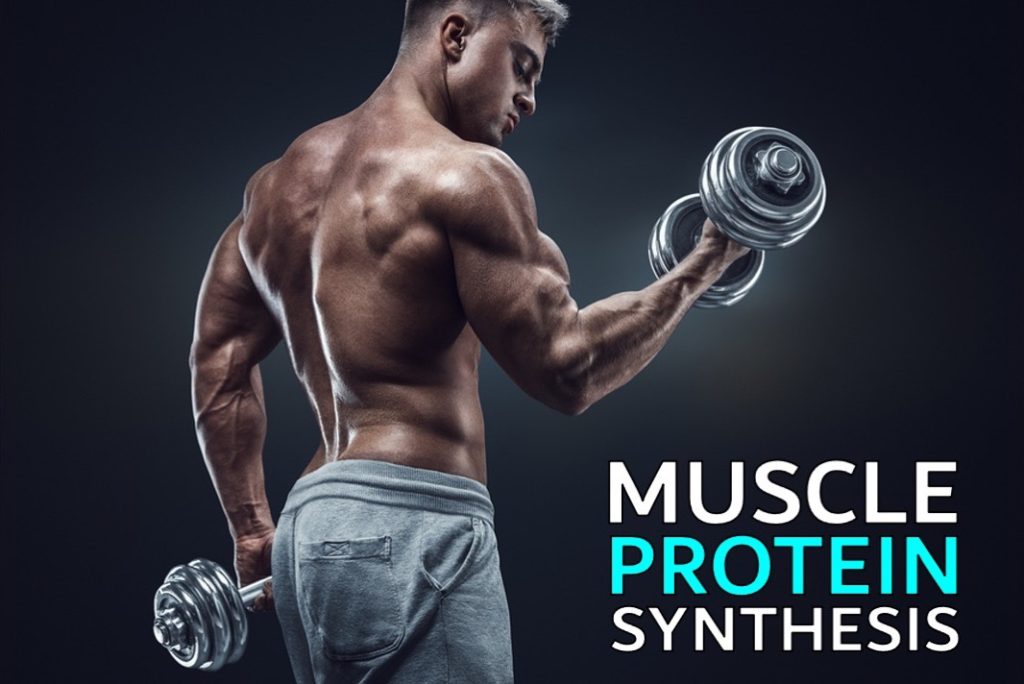
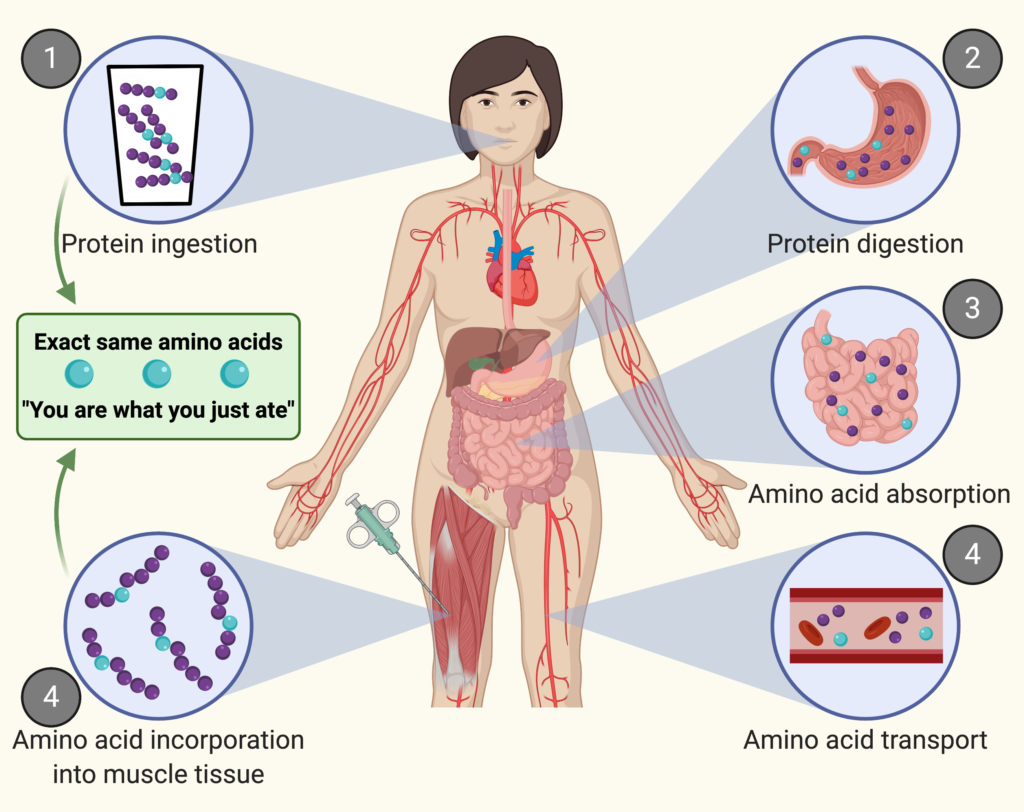

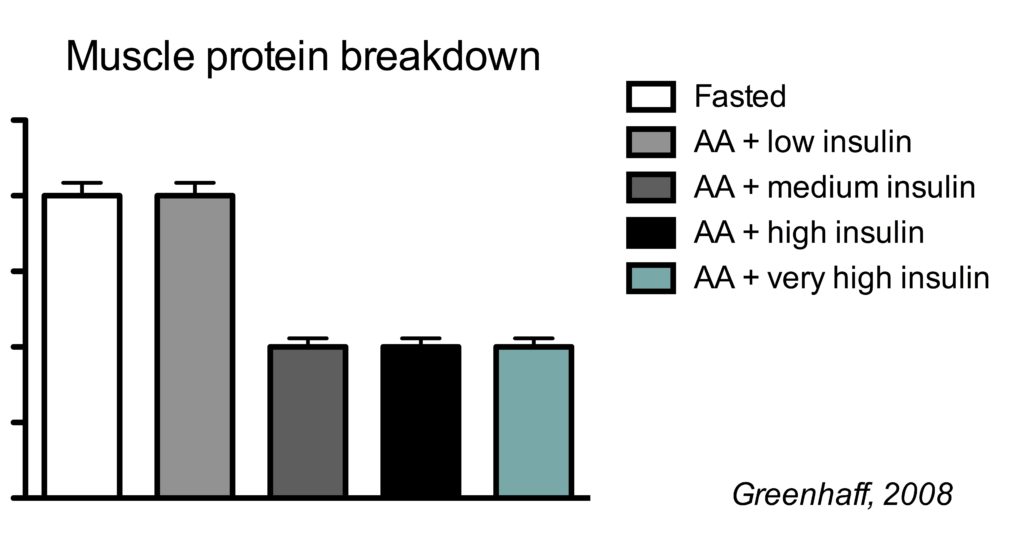
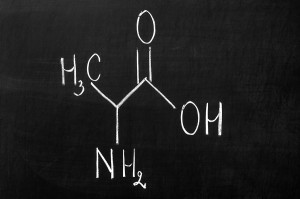
![1-[13C]-leucine](http://www.nutritiontactics.com/wp-content/uploads/2016/04/1-13C-leucine.jpg)
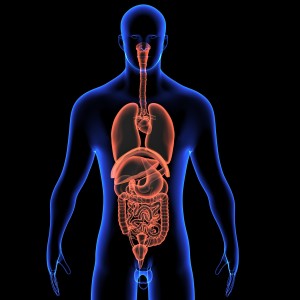
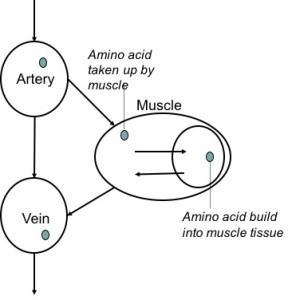
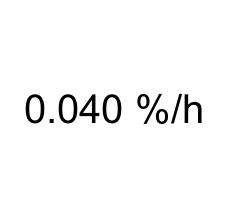
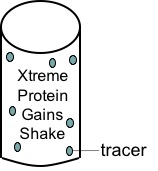
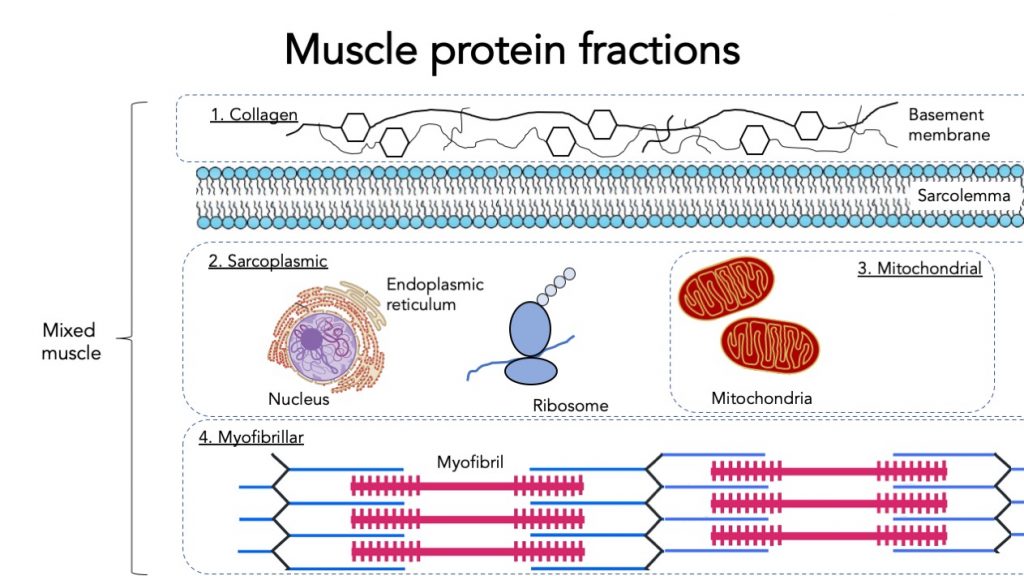
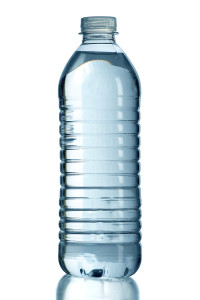
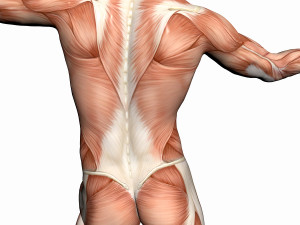


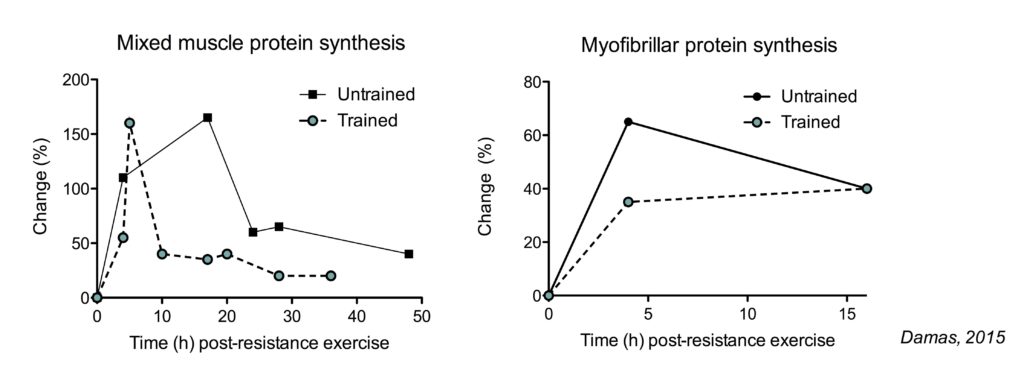
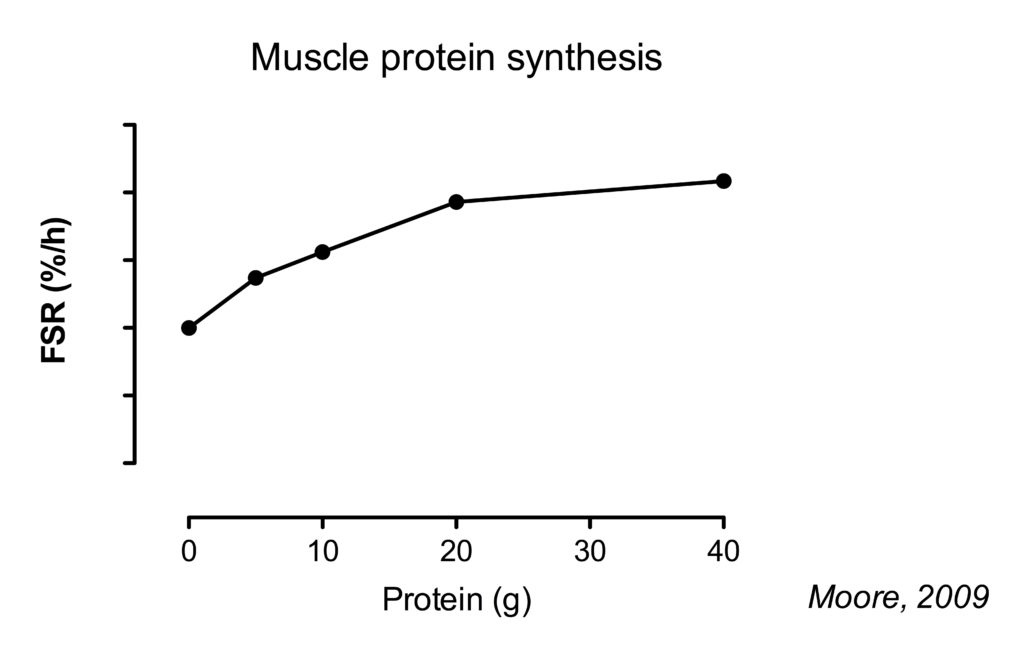
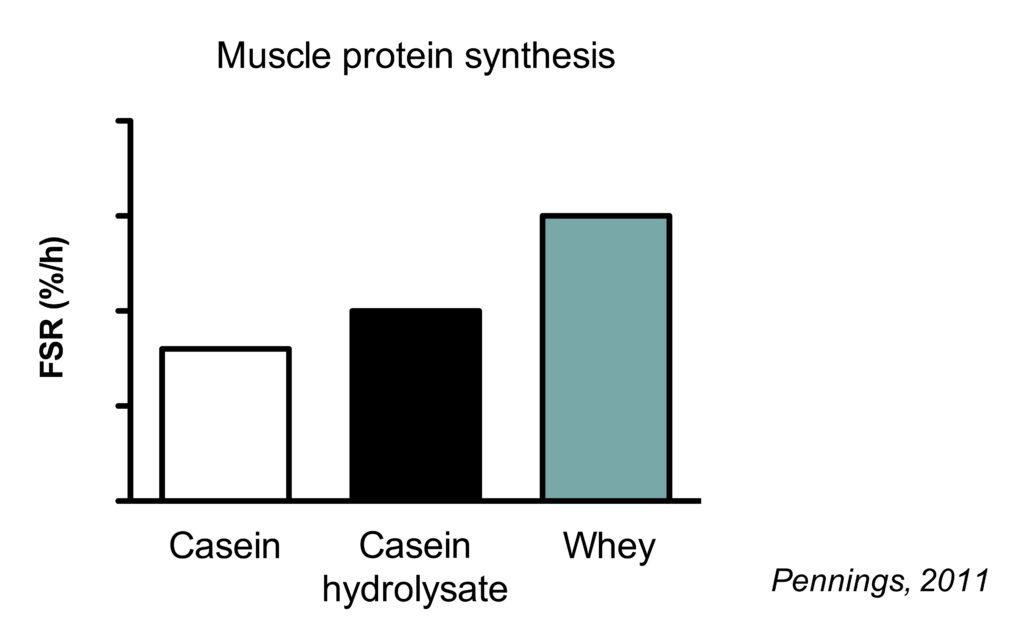
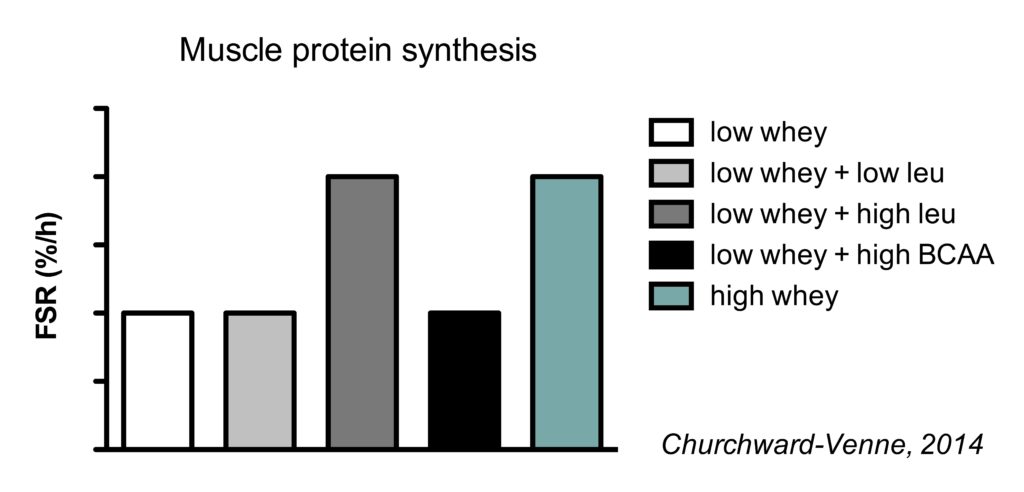
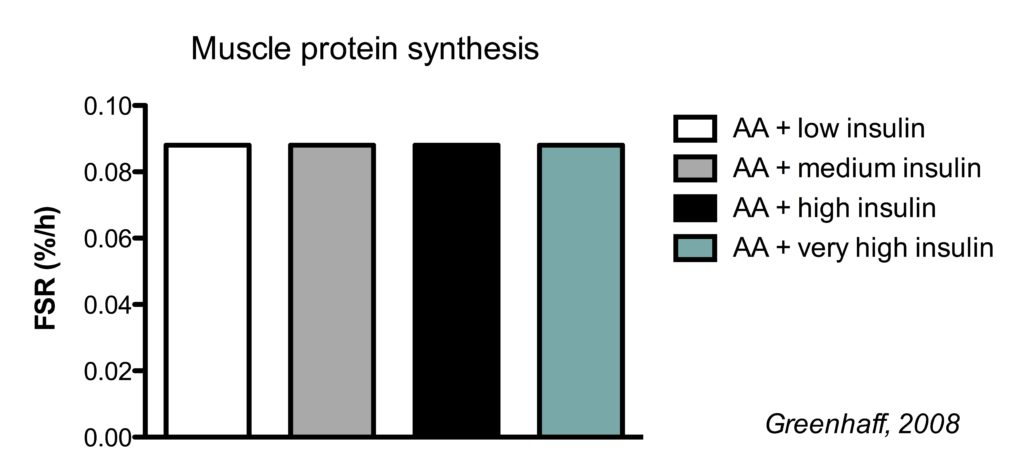
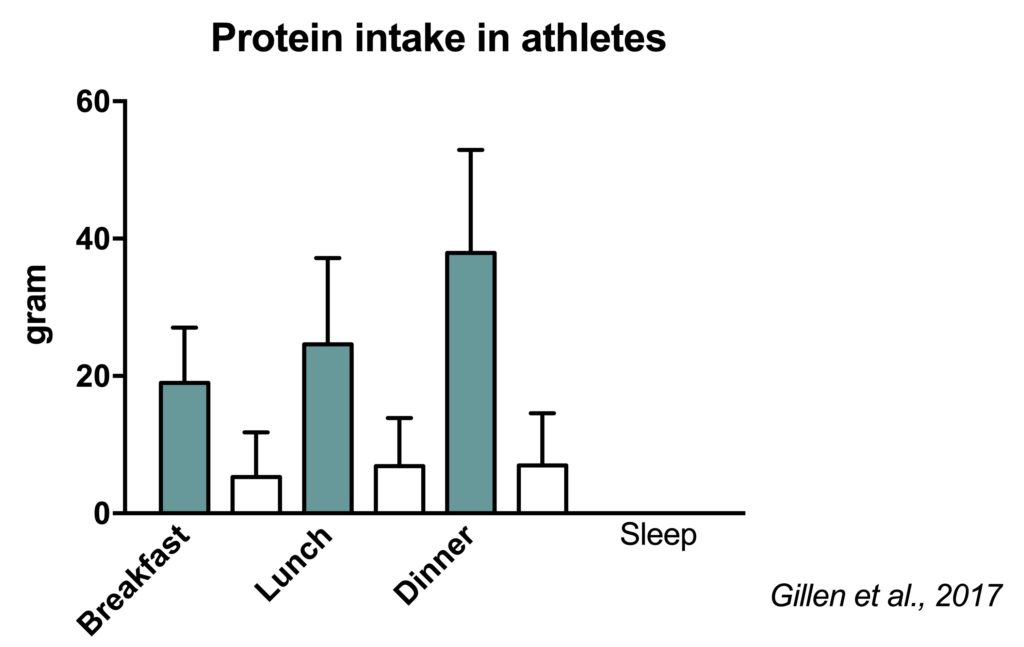
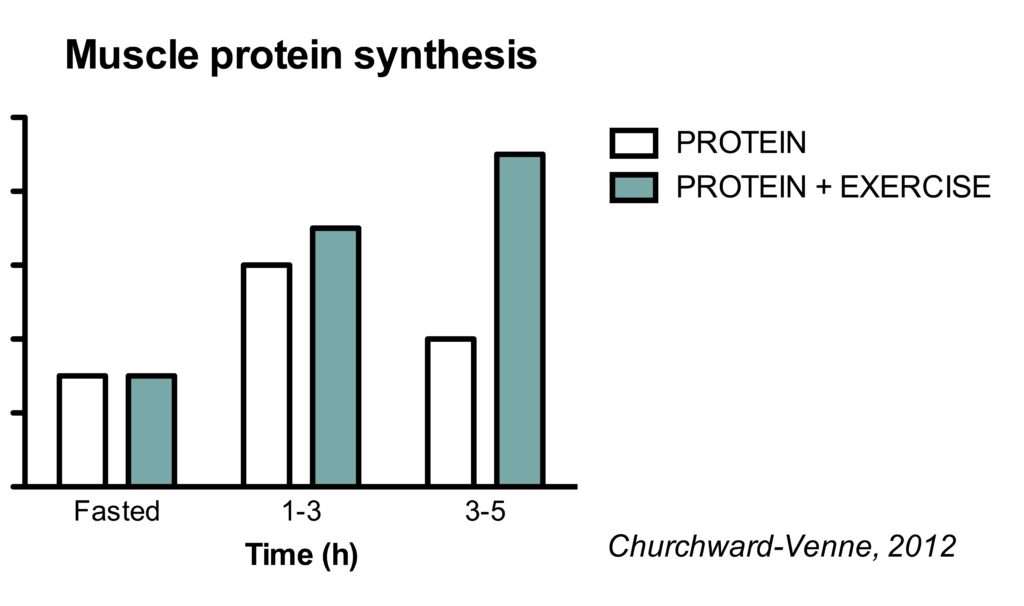
Excellent article. Loved reading it and it gave some more clarification on MPS, especially whole-body protein synthesis vs MPS, and why nitrogen balance is pretty much a debunked measurement for overall muscle mass gains. I did have a question regarding carbohydrates however. Even though overall protein and leucine content is the main driver for MPS and muscle mass gains, what about carbs in the sense of replenishing your muscle glycogen stores to maximize intensity (weight lifted) and recovery? So you can lift heavier weights and recover better thereby increasing muscle mass gains? If so, is there some sort of sweet spot for consuming x amount of carbs per day to maximize recovery and glycogen replenishment while not overconsuming carbs so that minimal lipogenesis occurs? Do you have knowledge in this area? What about fat consumption?
Thank you Jeremy!
Carbohydrates are indeed required for muscle glycogen repletion. However, strength training is not very glycogen depleting. Our lab has shown that even a very high volume for a muscle group, only results in a moderate depletion of muscle glycogen. And after such high volume, it’s unlikely that you would train that same muscle group the next day. So unless you go very low in carbohydrate, muscle glycogen should be restored before your next training for the same muscle group (if you do a higher frequency, you do less volume in that session and can still replete it before the next training).
So I’m not a fan of going low in carbs (I also wouldn’t know why you would want to do that), but there’s no need to go extremely high in carbs either.
In theory, having 2 scoops of whey (roughly 40g’s of the proteins) on an empty stomach 15-30 minutes before your meal – would, in theory, be more beneficial than just having a “real meal” with 40g’s of protein? In the context of all amino acid are equated. Because mixed macro meals limit leucine absorption?
Second of all, I would like to say thank you for this free information – it’s absolutely a blessing.
Yep you could theorize that. But unlikely to make much of a difference.
More recently, there has been some research suggesting that other nutrients may stimulate MPS. That would suggest that real meals might have some advantage over a protein supplement.
I’ll try to update the post ASAP to include some discussion about that.
Hey found you on Jeff Nippard’s recent interview with you. Thanks for the info learned alot from your video and these articles.
I have a few questions regarding interview/post.
Nutrition
1) regarding the study of insulin and protein breakdown(clamping study), medium insulin + AA minimized breakdown. Even though higher insulin did not show less breakdown, did it prolong the duration? I would think that simple shake of whey protein wouldnt keep insulin at a level to minimize protein breakdown more than 2 hour ish.
2) is 20-25g of whey protein enough to minimize breakdown since the study that showed it did used 30g
3) U mention that whey seem to be better than slow digesting protein ie, mixed meal etc. due to the bolus whey vs dripping study. But studies on whey vs casein seem to show no difference on all of them with one study i remember to show that casein might in fact might be slightly better over a given period. Also is it true that casein inhibits muscle protein breakdown?
Training:
4) In regards to the ” muscle full effect”(MFE) and “refractory period(RP)”, you mention that it isnt a problem for people who resistance train. When does these effect come back? Does MFE/RP come back when MPS drops to baseline (42-72 hours after resistance training) or longer?
5)If MFE/RP come back in that specific time when your MPS drops to baseline wouldnt it be optimal for people to train about every other day to not only spike the additional synthesis stimulus again but overcome the refractory period/muscle full effect again?
6)Can muscle still grow after MPS drops to baseline or it’s like as if you dont train again, until your next gym session? If you cant thats more evidence to train a body part more frequently (every 2-3 days).
7)If rep range seem to have no difference given you train close to fatigue each set, does this theoretically mean you dont ever have to go heavy if your goal is purely hypertrophy?
8) Rest periods should be extended since 3-5 min> 1 min. Was volume equated in those study? If so doesnt that mean theres more to hypertrophy than just volume?
9) Referring to 8 what about drop sets? https://www.researchgate.net/publication/316737343_Effects_of_drop_set_resistance_training_on_acute_stress_indicators_and_long-term_muscle_hypertrophy_and_strength
Thanks in advance! Sorry for my load of question lol. If you need me to clarify any of my questions or want me to cite research please do.
1 more question does 20g for max MPS apply to slow protein too or just fast(whey) protein? Also the bolus whey> dripping whey. Does that apply to mixed meal/slow protein as well?
Hi Grene,
1) That muscle protein breakdown study used an insulin infusion. So they kept insulin at the same level throughout the entire period. So we don’t really know how long the effect of insulin on MPB last. Maybe insulin only inhibits MPB while insulin is elevated, but the reduction in MPB may also last longer than the insulin levels.
2) Twenty gram of casein can reduce MPB. But we don’t know if that was the maximal effect as no other dosages were tested.
3) Most studies show that whey is better than casein. Here’s a review:
https://www.ncbi.nlm.nih.gov/pubmed/25757896
4) That would be my guess. Very little has been done on that topic, so it’s all guesswork. But IMO whether the muscle full effect truly exists (and if so, under which conditions) is also a guess at this point. The data is not that convincing to me.
5) Theoretically, yes. But the MPS increase and sensitivity to protein kinda go hand in hand. It’s pretty clear that training at a frequency of 2 times a week per muscle group is superior to just 1. But if a higher frequency is better than 2 times weekly is unclear.
6) MPS has to exceed MPB for the muscle to grow. You kinda can get some MPB spikes by eating protein, but without the training induced MPS increase that won’t be enough to grow.
7) Nope, you don’t need to go heavy to grow.
9) No volume was not equated.
10) I’m not sure you can conclude much from that study. It was small and study and thus found no significant differences. They used effect sizes to suggest the dropset protocol was superior, but it’s definitely not a hard conclusion.
Bonus Q: No dose response study has been done with slow protein. It wouldn’t suprise me if you would need a bit more of slow protein. Yes, I would expect you would also need a bit more protein in a mixed meal.
Great content!! Thanks for your dedication. So Jorn, I have a big problem with muscle effect studies, both with or without exercise. In the Atherton et al(2010) the levels Plasma EAA, Plasma NEAA, Intramuscular Leucine and Plasma Leucine were all in suboptimal quantities after 180min, despite being above fasted. Looking carefully you can see that the values are approximately equal to that of 45 minutes after eating, and seems only reasonable that the same amout of everything would result in the same amount of MPS. In fact, MPS rates were almost identical in the 45m and 180m marks. I’d like you to point me to a study in which they actually feed the participants in the 180m mark.
Hi Kevin,
I’m not sure if the amino acid levels were suboptimal at 180 min. They were not as high as during minutes 60-120, that the level during that period was likely quite a bit higher than what needed to optimally stimulate MPS.
To further complicate things: even if plasma amino acids were suboptimal around 180 minutes, the intramuscular free amino acid pool should still be elevated an proving the muscle with amino acids for MPS. But I agree the study would be more convincing if the amino acids were clearly elevated for a longer period.
Here’s a study where subjects were feed leucine at the 180m mark:
https://www.ncbi.nlm.nih.gov/pmc/articles/PMC5869244/
Hey, nice study!
Admittedly i didn’t read it but listen to the podcast with Jeff Nippard.
Heard you say several times that you have nothing to lose by just getting the extra protein. I heard some people talk about dangers of too much protein, like kidney damage. Do you know anything about that?
High protein intakes put more stress on the kidneys in people with pre-excisting kidney problems. There is no evidence that higher protein intake are dangerous in healthy people. That doesn’t mean there are no potential detrimental effects, but nothing that we currently know.
Jorn Trommelen does TEF of Protein varies with types of Protein. Would TEF of Whey be different from the TEF of Beef for instance?
The TEF of processed food is lower than from unprocessed food. So the TEF from beef is probably higher than that of whey protein. However, I would expect similar TEF from whey protein vs beef protein isolate, for example.
Regurgitate that broscience my dude! Might want to “update” this as most of the “information” is incorrect.
Thank you for your thoughtful feedback.
Hey Jorn!
Just a quick question regarding “pre bed” protein i currently take 40g of whey mixed with 250ml of whole milk which totals 40g of protein i was wondering If it would be better to consume a fast digesting whey instead? also how does a combination of whole milk mixed with whey like i current take compare to a straight casein shake?
Fast protein appears to be the superior choice during the day in most (but not all) studies. However, due to the long prolonged duration of overnight sleep, it’s possible that a slow protein might be as good or even better than a fast protein source.
In the only long-term study with did with pre-sleep protein, we used a 50:50 combination of fast and slow protein. I don’t think there will be a huge difference either way, as long you pick a high-quality protein source.
Ty Jorn!
If you were given infinite funds to conduct three studies to answer anything protein related- what would they look like, and what would you hypothesize the findings to be?
While I’d love to talk about the study ideas I have in might, that’s not smart to talk about publicly. But some areas that interest me:
Wow the MPS response is different in trained athletes.
Should they train with more volume, or more frequently, or both?
Better understanding of the impact of protein distribution.
How important is to distribute your meals throughout the day? Should it be 3 meals, 5+ meals, or is 1 big meal intermittent fasting style just as good?
Alternative protein sources.
Not many plant-based protein sources have been studied, perhaps there are some who are quite effective? Important question for vegans and sustainability.
Impact of protein on other tissues.
For example, collagen is likely a poor protein source for muscle, but may be very effective to stimulate protein synthesis in cartilage, tendons and help to prevent injuries.
Ty, those are very interesting questions indeed. With regards to the ladder point, in case you haven’t already seen this, there was an interesting study on collagen synthesis and gelatin supplementation (https://www.ncbi.nlm.nih.gov/pubmed/27852613).
Hey Jorn! About the Protein Intake article on strongerbyscience and The Ultimate Guide to MPS, I have 2 questions:
1. Is eating 2 bananas right after my workout and then drinking my protein shake going to decrease MPS rates because of carbs ingestion?
2. Does it matter if the Leucine supplement is from plant or animal products?
3. On MyProtein’s site it is suggested to consume the protein shakes “30 minutes before and/ or after your workout for maximum benefit.” In your studies I have read a lot about the post-workout benefits but have not read anything (or might have missed it) about your opinion on drinking a protein shake pre-workout. Would you please comment on that?
Love your articles and thank you for the answer in advance!
1) Eating two bananas is fine. There is no evidence that shows that carbs influence MPS when added to protein. Theoretically, a large amount of complex carbs could delay protein digestion and therefore slightly decrease MPS, but that would have to be a huge carb meal. Bananas are fine!
2) Nope. Leucine = leucine (at least when it’s in the free amino acid form).
3) I doesn’t seem it makes a lot of difference if you take protein before, during or after exercise. Most people eat about 1-2 hours before training, which would still provide you with protein during and after exercise. I think taking a post-workout shake is fine (to play it safe and it’s easy), but won’t make a whole lot of difference.
Jorn,
When you say something increases protein synthesis, are you talking about an increase in effect or length of time.
Also just to make sure, you’re saying working out as soon as you wake up with an empty stomach is not optimal for mass?
Generally an increase in effect; a higher MPS rate. But for example, 3 sets of exercise increase the rate of MPS but also prolongs MPS.
Being fasted (empty stomach) is never optimal for muscle mass (regardless of the timing of your workout).
Thank you Jorn.
Is breaking the fast with something small enough? Or do you need to have had a good meal prior before the workout?
Something small is enough (about 25 g protein). Carbs and fat are not required, but some carbs might give you a bit more energy.
Hi Jorn,
And what about eating only a piece of fruit (for the insulin) pre workout and then eat a protein rich meal 2 hours post workout? Or is only insulin not enough to reduce muslce protien breakdown?
Hi Jorn,
And what about eating an apple or banana pre workout (for the insulin) and then eat a protein rich meal 2 or 3 hours post workout. Is the insulin enough to reduce muscle protein breakdown or dou you also need AA?
Loved the content, in particular the meticulous sourcing (opinions based on fact stated as such are fine; opinions stated as facts obfuscate the truth and spread bro-science that much more).
I’d like to see some sort of indexing of your site rather than merely paging through chronologically. Keep it up!
What a great article! Thanks for putting all this effort!
I have few questions though:
1) As I understand from the article full body workout is superior than split routine. So will 5×5 full body workout 3 days per week be sufficient for MPS as close to failure?
2) Article mentions 0.25 g or 0.4 g/kg meal. But what is proper protein intake per body weight during a day?
Is 1.0 g/kg BW of protein enough for young adult during a day as mentioned in this article https://www.ncbi.nlm.nih.gov/pmc/articles/PMC3705323/
Hi Elkhan,
1) A full body workout is not necessarily superior to a split routine, it just depends on how you design it. A 5×5 full body workout 3 days per week would be superior to a ‘bro-split’ where you only hit each body part once a week. But you can also do a upperbody/lower body split, where you hit both UB and LB 2 times a week or even 3 times a week for example.
2). A recent meta-analysis suggested that optimal protein intake was 1.6 g/kg/d (but that if you want to include a safety margin just to be safe, you could go up to 2.2 g/kg/d).
https://www.ncbi.nlm.nih.gov/pubmed/28698222
Cheers,
Jorn
Thank you for breaking this info down like this. You made it incredibly easy for me understand as a lay person.
Great and very informative article. Thanks!
There is a myth going around that eating too much protein may cause harm, specifically to the kidneys. It would be great if you could a section in regards to eating a lot of protein and the health risks or negative side effects associated with that.
Thanks Mat!
Tons of updates and additional sections are planned!
John, I’m truly blown away at the depth and detail of this overview. Thank you for writing this, I feel like this is the most educational synopsis on protein intake I’ve ever read.
Thank you for the kind comment Matt!
Jorn this article is awesome! Is it available in PDF format? Id really like to pass it around to members of my training group, as i think it covers in a very accessible way some really important concepts.
hey jorn, great article! one question though. I see everybody here asking questions on dieting and food but what I’m really interested in is the training so: is muscle protein synthesis optimally elevated during the 24-48 hours of the workout? and if so, wouldn’t it be more efficient to follow a ful body routine, training every body part every 2 or 3 days thus training more frequently and with a higher number of sets per body part? thanks, really hope you can answer my question!
Hi Simão,
Thank you for the kind words. Depending on the volume, exercise can increase MPS for 72 h. However, the increase in MPS is the highest in the first 24 h. So is a high frequency beneficial? Maybe.
A frequency of hitting a muscle group twice a week is superior to only once a week. But whether 3 is better than 2 is not clear:
https://www.ncbi.nlm.nih.gov/pubmed/27102172
It is not really clear what happens to MPS when it is still elevated from a previous workout and you train again. My best guess is that a higher frequency is beneficial.
Really good article thank you.
With regards to the insulin suppressing MPB what level of carbs would you need to get to the ‘medium level’ of insulin?
Or would a 30g protein serving reach this level by itself?
Thanks
You don’t need any carbs at all. 25 g of whey protein is sufficient to get enough insulin to maximally inhibit MPB (1)
1) https://www.ncbi.nlm.nih.gov/pubmed/21131864
Hello Jorn,
Kudos to you for putting this together, and updating it regularly. A great compendium and summary of findings.
I will definitely refer to it over time as I identify questions to which “Bro” Science seems to cause me to wonder. It has helped me understand topics like Leucine ratios.
I will have more questions for you later. The one that pops to mind now is:
You reference evolutionary trends in some of your responses to questions. I have noted for example that wisdom teeth have all but lost in 1-2 generations (starting in the 80s), leading one to consider the conclusion that quick evolutionary adaptations are possible. What is your opinion on how quickly that can impact MPS, specifically with changes to Macro composition intake (for example:
Day 1-3: Deficit – Protein (60%) + Fat (30%) + Carbs (10%), with RT then Cardio, 14hr fast Day 2
Day 4-5: Deficit – Protein (40%) + Fat (20%) + Carbs (40%), with RT then Cardio, 14hr fast Day 4
Day 6-7: Maintenance – Protein (40%) + Fat (10%) + Carbs (50%), with Cardio to get to maintenance caloric intake (otherwise known as lower body light exercise)
I realize the above has more changes than you would run in a single study, since the correlation could become unclear. Still, I wanted to throw it out to see what your thoughts are on this (no existing studies I am aware of)
Again, thank you…
Hi Fadi.
I actually don’t like ‘it makes sense from an evolutionary point view’ as an argument. I sometimes reference evolution because it helps to illustrate a point, but at the end of the day the data is what matters.
In this case, there is no data that suggests you can trick your body. Low carb diet, short/long fast periods, ketogenic diets, juice diets, it doesn’t really matter what you do. You cannot trick your body, caloric balance will be the main driver of weight gain/loss and exercise/protein intake will determine how much of that weight gain/loss will be muscle.
So I don’t like diets that switch arounds macro’s all the time. IMO macro’s should be pretty much the same everyday (but can slightly change over time depending on your goal: muscle hypertrophy or fat loss.
Thanks for this guide, it is by far the best article on MPS out there.
I have a question about the MPS reduction that occurs in 3 days of being in a calorie deficit. Is this related to average calorie intake, or does it occur after “consecutive days” of being in a deficit? I have read that alternate day fasting approaches to dieting spare muscle so I’m wondering if that is related to the higher calorie day preventing a reduction in MPS because at any given moment, you have been in a state of calorie balance or even a surplus within the past day or two – any thoughts on this?
I’m skeptical that alternate day fasting would spare muscle mass. Is there a study that supports that? Based on what we know of protein distribution, I’m not a fan of intentionally fasting if your goal is to maximize muscle growth or maintain it.
The reduction in MPS that occurs while being in a caloric deficit likely is linked to average calorie intake. Otherwise you could trick your body with alternative day fasting for example, and that does not seem to be the case. From an evolutionary perspective, that wouldn’t make sense because if would be dangerous for your body to invest energy in MPS if you are clearly ”starving” based on your average caloric intake.
Thanks for the reply Jorn.
I was referring to some research discussed in this article:
http://suppversity.blogspot.co.uk/2016/09/true-alternate-day-fast-beats-classic.html?m=1
The subjects lost less muscle in the alternate day fasting group according to the article.
I think the subjects were overweight/obese however, so perhaps not relevant for the athlete/bodybuilder population.
Hi Harry,
I think it’s difficult to make conclusions based on that study. There was no exercise component in the study. In addition, the groups were not in the same caloric deficit. And the majority of the study was unsupervised.
A much more comprehensive study was published recently, and found no differences between groups:
https://www.ncbi.nlm.nih.gov/pubmed/28459931
If you like fasting, for example, because you think it’s just more convenient and it’s easier to stick to than a traditional diet, I think it can be a good tool. But just based on the physiology, I think that fasting periods are more likely to be detrimental for body composition than beneficial.
Could you briefly explain why 4-5 meals are better than one or two big ones if its not the “muscle full effect”?
If i eat 200g protein in the morning and it stays in my blood during the day, what makes it worse than eating 40g 5 times?
There are a few studies that suggest that distributing your protein in multiple meals throughout the day is better, it’s not something that has clearly been shown to be superior.
When plasma amino acids levels get high, you oxidize a lot of it (burn it as fuel). Perhaps a more frequent protein distribution allows for optimal plasma amino acid levels to optimally stimulate MPS without going to high that you oxidize it?
Based on the data we have, eating 4-5 meals seems to be the best choice if your goals is to maximize goals. But it definitely is not the end of the world if you would get the same amount of total protein in a day in less meals.
Amazing post! I’m sharing this, and I am sure I will refer to this many times in the future.
I would love an addendum about the effect of total daily protein intake on MPS. I wonder if the optimum daily protein intake could be deduced from 20-40 grams every ~3 hours?
Thanks Daniel. I’m not convinced you would need to actually eat every 3 hours. My guess would be that every 4-5 hours would be frequent enough.
I hope to add more discussion soon.
By the way, i train in my home. Do you think if i had my power/training it is a good idea to sleep after i take my protein and food for like 2 hours? Would it even make my GH larger and optimize my gains?
Acute changes in hormones don’t seem important. Elevating GH for 2 hours will do very little. I would make sure my total amount of sleep is solid, and not try to break it up.
This is really interessing! Offcourse, i known a lot of this allready but.. There is some new facts that i had learned from this! By the way.. What do you think about kcal surplus in bulking, how much do you think you need to build muscle. I Always use 300/500 but.. Maybe i think it is likely that you can build allready muscle with a surplus of maybe 100.. what do you think about this?
I think you can even build muscle without a caloric surplus, but that you can gain more muscle (but also fat) when bulking. For example, if you eat a maintenance, you might gain a little bit of muscle, but no fat. Bulking with a 100-200 kcal surplus, you would gain muscle a bit faster, and some minimal fat gain. Bulking with 500 surplus, you would likely gain muscle a bit faster gain, but now also gain significant amounts of fat. Eating above a 500 kcal surplus will likely have little incremental value for muscle gain, but will massively promote fat gain. My guess would be that small deficits are optimal for body composition.
thanx for ur response. This articel is very usefull to me… Offcourse i still try to do anything that i could do to promote just a little bit ´´better´´ What is your idea about heavy weights with ´´loser form´´ of training vs training with a very concentrated and slower rep?? Normally i switch between these 2 forms now and than. What do you think is more ´´effective´´ for gaining more mass? Again, great articel and i hope to find much more soon about this subjects on ur site soon!
As long as a set if taken to (close to) failure, it will give the maximal stimulation to the muscle. So I don’t think there would be much difference. I don’t think a bit of cheating hurt as long as you make sure you don’t increase injury risk. I would do the majority of your training with strict form (but not intentionally slow down), and do a bit of cheating every now and then.
Wilson,G.J., et al.{2011}. Leucine or carbohydrate supplementation reduces AMPK and eEF2 phosphorylation and extends postprandial muscle protein synthesis in rats. Jorn what do you think of this study? Cheers!
It is an interesting study. It is based on the muscle full effect described in section 7.9. However, in a post-exercise state, the muscle full effect doesn’t appear relevant. In this study, leucine supplementation about 2 h after a meal prolonged the MPS response. So my guess would be that protein itself would do the same. In addition, carbs appeared to prolonged the MPS response to a meal. While in humans, there’s no indication that carbs do anything on MPS.
Killer post Jorn. It shows you really know your stuff! I’m including it tomorrow in our weekly bodybuilding science review (1,151 subs). It’s over at http://newsletter.drmuscleapp.com/ (feel free to edit out the link).
Cheers!
Carl
PS. Read your recent paper with Luc van Loon. Great work.
Chicken vs Eggs vs Whey for Maximum MPS?
Can I eat protein every 3 hours in the form of whey protein shakes: whey shake @ 9am, noon, 3pm, 6pm (pwo shake) then during the evenings meet my macros which will mostly be fats and carbs and a few proteins due to the handful of shakes ive already had. Sort of like IF but with shakes every 3 hours. Is that optimal? I like simplicity during the work day that’s why I ask.
Chicken hasn’t been used as protein source. Egg protein powder has been used and appears to be a very good source. Whole eggs have not been used, but I would expect them to be pretty good.
Whey is theoretically the king, because it has everything you want: a high essential amino acid/leucine content, and rapidly digesting.
Most whole-food will be digesting a bit slower, which would theoretically be slightly worse. But likely the differences between those sources would be minimal, they’re likely all very good.
Your suggested meal pattern would combine optimal protein frequency with the convenience of IF. I think it would be very effective. (I think you could even get away with a shake every 4 h).
Hi Jorn,
I’m following a diet plan similar to which Chris has described, mainly for the same reason:
40g whey+10g BCAA and L-Glutamine @6am, 11am, 5pm, 11pm.
I eat meals @ 2pm and 8pm covering the rest of my macros.
I actually experience fat gain and muscle loss with a 50 -100 kcal deficit, while I always feel bloated.
How is that possible that I consume over 200g protein daily mostly in the form of whey protein shakes and I’m just getting fatter while keep losing muscle mass according to the ?
I’m 187 cm tall, 90kg, 27 years old, male, daily heavy resistance training, but sedentary activity level during the day.
At the end of last year I gained 15kg weight of which was about 6kg muscle and 9kg fat. I started with 8% body-fat and went up to around 16%. I was 105 kg when I started cutting.
I followed a high protein low carb diet with severe calorie deficit with which I’ve lost all my hard-earned muscle in 2 months and dropped below the lean muscle mass I had started on originally.
Currently, I’m 89 kg but with a body-fat of 11%.
Now all I’m trying to do is maintaining muscle mass while cutting down to 6%. for the summer and then slowly building it up again, but I’m utterly confused as the plan I follow doesn’t seem to be working at all, although based on everything I know and I’ve read, it should.
Do you have any idea of what may be causing this effect and how I could fine-tune my diet to avoid this bloating, fatty feeling?
Your help is much appreciated! Thank you.
Hi Attila,
If you’re in a 50-100 kcal deficit, you shouldn’t gain body fat. How did you determine the kcal deficit? Any formula is just an estimation. If you’re gaining body fat, you are in a surplus.
Likewise, how did you determine fat mass and muscle mass? Almost all options consumers have access to are quite unreliable on an individual level.
You mentioned a severe caloric deficit while cutting and losing all your muscle in 2 months. Dieting should be a very slow process. You mentioned you gained 15 kg in your last ”bulk”. You should try to cut that amount on 2 months. You should at most lose 0.5 kg/week, which would have been a 30 week cut.
It sounds you’re gaining and losing weight way to fast – the traditional bulking and cutting. I suggest to not gain more than 0.2 kg/wk while gaining mass, and not loss more than 0.5 kg w/wk, and even that is quite aggressive (Ideally both of those are like half). When you gain weight fast, a disproportional amount will be fat mass. When you lose weight fast, a disproportional amount will be lean mass. Therefore it’s much better to gain slowly (and most of it will be muscle), and lose weight slowly (most of it will be fat).
I hard for me to determine what may cause your bloated feeling.
Good luck!
First of all thank you for this great sum-up. I really appreciate it.
What is your opinion on the usage of metformin in the case of type two diabetes (500mg tree times a day), would it have an detrimental effect on muscle gain?
Jorn is there any benefit to lifting heavy weights while on a severe calorie restricting diet? Will it help to preserve muscle mass? If on a normal diet and taking insulin for a diabetic condition when should the insulin be taken in relation to a heavy resistance work-out to achieve the most muscle gains? Cheers
I’m not an expert of metformin.
Lifting is absolutely beneficial to preserve muscle mass during caloric restriction. I think you’re asking whether the timing of insulin would matter for muscle gains? For example, whether taking insulin close to exercise is beneficial for muscle gain?
I don’t think that the insulin timing would matter much. Insulin in physiological amounts doesn’t do a whole lot for muscle growth.
Thank you for the answer. I thought about the AMPK activation of Metformin would be detrimental to mTOR and MPS.
Jorn I have always believed that when ingesting protein, if I didn’t ingest enough carbohydrates at the same time, some or all of the protein I ingested would be converted to glucose and metabolized for energy. Can you comment on this belief? A friend advised me that a very effective way to lose weight was to cycle to exhaustion and then not eat for several hours after completion. My fear is that this would promote muscle loss, like doing a resistant work-out and not eating afterwards. Can you comment on this? Much appreciated! Cheers
Hi John,
Protein can be converted to glucose. However, it’s not really a concern in practice. Your liver glycogen sustains you plasma glucose levels. If you haven’t eaten for a while, it’s not like your body is starving all in a sudden. There are dozens of studies done where subjects get protein (without carbs) after not eating in the last 10 hours. Protein isn’t converted to glucose, but is very effective to stimulate muscle protein synthesis under such conditions. In addition, adding carbs to protein does not help to build more muscle.
Losing weight is simply about being in a caloric deficit: calories in – calories out).
There is absolutely nothing magical about cycling to exhaustion other that it burns some calories. Perhaps your friend has read something about glycogen depletion and that it might help with losing weight, but that’s mostly nonsense.
There is absolutely nothing magical about not eating for several hours after exercise, other than that is helps with lowering your caloric intake. Not eating directly after exercise is not necessarily a big deal with regards to muscle loss, as total protein intake during the day is the most important variable for muscle mass. However, there is no logical reason to wait hours. Ideally, you eat 4-5 meals high in protein (a protein shake can already count as one of those meals) to maximally stimulate muscle protein synthesis rates throughout the day.
Thanks Jorn for a very comprehensive and knowledgeable reply!
If I am reading your reply right, you are saying that with regards to protein synthesis, protein is the only macro-nutrient that affects it, the amount of carbohydrates and fats consumed is of little significance. Am I understanding you right?
If this is true then one should be able to achieve maximum muscle gain while simultaneously achieving maximum fat loss by being on a high protein low calorie diet. Is this true or is the amount of calories consumed (energy balance) a significant factor in protein synthesis and/or net overall muscle gain? In other words, does a large calorie deficit hinder protein synthesis and/or overall muscle gain?
Cheers!
In the short-term, calories don’t matter for MPS. But it does over a couple of days.
You don’t need carbs, fat, or calories in a specific meal to maximize MPS. In other words, you just need some protein to maximize MPS regardless of what you eat along with it or have eaten in the previous 12 h.
However, that only works short-term. In general, you do need to be in energy balance or MPS will go down. You can be in a (large) energy deficit for 12 hours, without negative effects on MPS. However, being in an energy deficit for 3 days reduces MPS (see section 7.11).
Jon thank-you for your great kindness in taking the time to answer my questions and sharing your vast knowledge with me and others!
Jorn I think you are saying that, unless replenished by carbohydrate, one’s liver glycogen will last for approximately 12 hours. Right?
Would an effective strategy for maximum muscle gains be: to eat protein at 2-3 hour intervals and carbs at 12 hour intervals? Or simply eating meals consisting of only protein inter-spaced with meals consisting of only carbohydrate?
Eating protein by itself should raise the MPS rate, since it will be absorbed into the blood stream faster, since there is no carbohydrate to slow down absorption.
Are there any micro-nutrients that are necessary for MPS? Other than the general effect on one’s health, would a deficit or absence of any specific micro-nutrient directly affect MPS? For example: iron or vitamin C or a B vitamin or certain minerals? If the answer is yes then should one take multi-vitamins several times a day to maximize MPS?
I have read that during long endurance exercise events that the body utilizes protein for energy along with fat and carbohydrate, a.k.a. muscle is broken down and utilized for energy.. I am guessing that this is most pronounced when the body has exhausted it’s glycogen stores. Is this phenomenon mostly the result of cortisol being released into the blood stream and so a mechanism that is unique to endurance exercise?.
Jon thanks for the re-education! So many myths that I believed have now been dispelled and I understand things much better now. Cheers!
How long liver glycogen lasts depends on your activity level, but yeah it slowly goes down.
There is no research to show that eating carbs with protein will actually lower MPS (though it might a bit). I wouldn’t worry too much about.
There aren’t any specific micro-nutrients known that are necessary for MPS. But it wouldn’t surprise me if a suboptimal micro-nutrient status would have a small negative effect on MPS. Because when there is a micro-nutrient deficicy, many body processes may be suboptimal, such as protein digestion, blood flow to the muscle, hormone levels etc.
I don’t think you need to take several multi-vitamins a day or that it’s even wise to do. Micro-nutrient status does not change from hour to hour. Just make sure you get enough micro-nutrients on a weekly basis.
Also important to note, there is some research that vitamins/anti-oxidant supplementation may lower some of positive effects of training. By eating fruits and vegatables, you’re unlikly to too high doses of anything and you’ll get many micro-nutrients that are not in a multi-vitamin.
Yes, protein is broken down during long endurance events and indeed this is worse when glycogen levels are depleted. However, most of this protein won’t be muscle protein. It seems likely cortisol plays a role in this. With resistance-exercise this is less likely to happen, because you won’t deplete your liver and muscle glycogen. Though cortisol also goes up with dieting for example.
Jorn it might be worth mentioning in the sections on protein intake that the bolus needed does go up with age. I don’t know of any concrete numbers here but Stuart Phillips and I’m sure Tipton can both attest to this. Just in case some old guy like me reads your piece, which they will if I have anything to do with it! 😉 Good work!
Yep, it’s on the to do list!
In older adults, 40 g protein clearly outperforms smaller amounts of protein. Higher doses of protein have not been tested. So ideally, you want at least 40 g protein at each meal as an older adult. However, that’s not always easy to consume. Leucine supplementation might be an effective strategy to enhance the MPS response to meals that contain less than 40 g of protein.
Can a person maximize MPS with fasted training?
If I go to the gym early in the morning with an empty stomach is that a bad strategy for maximize gains???
In the same situation how can u spread the meals throughout the day??
Fasting is not going to be optimal for muscle mass gains. But while it’s not optimal, you can still make decent gains on intermittent fasting or while doing fasted training. For optimal muscle mass gains, you should try to never be fasted and always have some protein in your system (probably 4-5 meals spread out throughout the day). However, the befit of optimally distributing protein over the day compared to intermittent fasting is relatively small.
So if you love intermittent fasting and it allows you to not obsess over food, helps with diet adherence, makes you more productive etc, it can be a very effective approach for you. But for the absolute the best effect on muscle mass gains, a higher meal frequency would be a little bit better.
Hi,
If I ate four meals daily
and distribute my protein intake evenly, which is 60g per meal
spaced by 4 – 5 hours
It won’t maximize my gains?
3 hours is a must!
Do you think large portion of slow digested protein extend the the three hour window for MPS
Some expert says positive nitrogen balance is more important than MPS
Hi William,
Yes, 4 four meals of 60 g spaced by 4-5 hour should be very to close to maximizing your gains. You don’t have to eat every 3 hours (see the picture in section 7.9 muscle full effect. You see that protein can stimulate MPS for 5 hours if you’re in a post-exercise condition. And if you follow my training frequency guidelines, you’re basically always in a post-exercise condition as the synergy between exercise and protein lasts at least 24 h).
I’m not sure which experts you refer to who claim that a positive nitrogen balance is more important than MPS. Do you mean actual protein researchers? Because none of the top muscle metabolism labs use nitrogen balance anymore as measurement tool to evaluate the anabolic effect on muscles.
I am confused because Dr. jim stoppani says I must eat every 2 – 3 hours to maximize muscle gains
and he says that positive nitrogen balance is more important than MPS
From your article,
I understood that resistance training extend the 3 hours window of MPS so I it’s ok to eat every 4 – 5 hours as the research in section 7.9 shows
I will quote for you Dr. jim stoppani article, so you can read it below
Dr. jim Article
If you follow my meal plans for maximizing muscle growth, you know two things:
(1) My diets have you eating protein every 2-3 hours, and (2) my diets work!
Recently, however, a few so-called nutrition “experts” have suggested that eating every few hours is NOT the best way to build muscle. They’ve actually suggested waiting 5-6 hours between meals! And get this, they have science to support their recommendations.
This is based on research showing that if you consume a protein meal (or essential amino acids), it boosts muscle protein synthesis for only about two hours without another boost in protein synthesis coming for at least another six hours even when adequate amino acids are present.
Okay, so this theory is suggesting that if you consume a protein meal (let’s say a protein shake), it will boost protein synthesis. If you then consume more protein (say, another protein shake) two hours later, there would be no additional boost in muscle protein synthesis. However, if you wait about six hours or longer to consume that second protein shake, you would get another big increase in muscle protein synthesis. So it makes sense that to maximize muscle growth, you should wait a good six hours between meals so that every meal you eat boosts muscle protein synthesis. Sounds solid, right?
No, not solid at all.
Granted, protein synthesis is very important. I’m not debating that. However, just because you have a boost in muscle protein synthesis does NOT mean you get an increase in muscle growth. Muscle growth is a balance between muscle protein synthesis (the build up of muscle protein) and muscle protein breakdown (the breaking down of muscle protein). To get an increase in muscle growth means that muscle protein synthesis must be greater than muscle protein breakdown. And guess what? Muscle protein breakdown is happening all the time. It’s especially happening when you go several hours without providing your muscles a source of protein with all the essential amino acids.
What the aforementioned experts are missing by suggesting that you should wait up to six hours between meals is that, while protein synthesis may be maximized, so is muscle protein breakdown, which minimizes any gains you would get in muscle growth.
Just to be clear, I’m not saying that you can’t build muscle eating every six hours. I’m just saying that you can’t really maximize muscle growth this way. The best way to maximize muscle growth is to eat a high protein meal (at least 30-40 grams of protein, depending on the protein source) every 2-3 hours.
How do I know this? It’s based on three things:
1) Watch a newborn eat and you’ll see that EVERY SINGLE ONE OF THEM eats every 2-3 hours. The first year of life is the most critical for rapidly gaining mass. And to ensure that this happens, we have evolved to eat every 2-3 hours. If it didn’t work, infants would be eating every six hours or so and parents would be getting much more sleep during the first year of their child’s life! It’s not until later on in the child’s life that we start imposing the three-meals-per-day schedule on them, which has more social significance than anything to do with fueling the body in the best way possible.
2) I’ve been prescribing this style of frequent eating for over two decades and have seen it work for thousands and thousands, if not millions, of men and women who were previously struggling to gain muscle mass. As soon as they step up their meal frequency they also step up their muscle mass and strength gains. Just with my Micro Muscle/Shortcut To Size program, which employs frequent meals eaten every 2-3 hours, I’ve received feedback from hundreds of thousands of men and women who have been able to build adequate muscle mass by following this diet and training program.
3) There is actually research, courtesy of a fairly recent study from Australia, suggesting that eating protein every three hours trumps eating it every six hours. And that’s what I’ll be focusing on in this article.
The Aussie researchers had subjects perform a leg workout and then fed them a total of 80 grams of whey protein over the next 12 hours in three different methods: (1) eight 10-gram doses of whey protein every 1.5 hours; (2) four 20-gram doses of whey every three hours; and (3) two 40-gram doses of whey every 6 hours.
They reported in a 2012 issue of the journal Nutrition & Metabolism that protein net balance, which is essentially muscle protein synthesis minus muscle protein breakdown, was significantly greater when they consumed the four 20-gram doses of whey every three hours as compared to the other two methods.
Greater protein net balance essentially means more muscle growth.
References:
Bohe J, Low JF, Wolfe RR, Rennie MJ. Latency and duration of stimulation of human muscle protein synthesis during continuous infusion of amino acids. J Physiol. 2001 Apr 15;532(Pt 2):575-9.
Moore, D. R., et al. Daytime pattern of post-exercise protein intake affects whole-body protein turnover in resistance-trained males. Nutr Metab (Lond). 2012 Oct 16;9(1
Hate to be negative, but that is a very poor article for someone who has a PhD.
Half the article is not even science, but just anecdotical evidence and stuff ”that sounds good” (the baby stuff). That’s a recipe for broscience.
You wrote that Jim says that a positive nitrogen balance is more important than MPS, but from his article I think you ment he says a positive protein balance is more important? Protein balance is not the same as nitrogen balance (see section 3.1 for a description on nitrogen balance, and 3.3 for whole-body protein balance.)
In section 2, I explain that muscle protein balance almost entirely depends on MPS (muscle protein breakdown has little influence).
The mistake that Jim is making is that he missed the difference between WHOLE-BODY protein synthesis/breakdown/net balance, and MUSCLE protein synthesis/breakdown/net balance. See section 4.1 for explanation of the difference
The Moore, 2012 study he referring to measured whole body protein synthesis, whole body protein breakdown, and whole body protein balance, not MUSCLE protein synthesis/breakdown/balance.
So the measurements in that study are not relevant for muscle. And the funny thing is, is that even if the measurements were relevant to building muscle, the WHOLE-BODY protein breakdown was the same for the group that ate every 3 hours and the group that ate every 6. In addition, the WHOLE-BODY protein net balance was the same between the 3 vs 6 hours groups.
I think it’s a bit ironic that Jim acts like he knows much better than other experts in his article, but then is completely wrong in his article. I hate to be negative about people, but as an actual protein researcher I have to point out that you probably shouldn’t take any protein advice from him.
Hope that clarifies a few things?
Thanks doc,
you convinced me
I was brain washed by jim lol
Couldn’t agree more, but I admit that I find this kind of thing relatively commonly. Although I got the PhD, I am much more of a practitioner, and need to dispel a lot of misinformation my patients received from online communities. Having someone else with a PhD saying it makes it even harder.
In regards to the nitrogen balance issue, most exercise physiologists I took classes under flatly denounced any benefit to eating beyond neutral nitrogen balance. Not sure if this was just an old school mentality, or the fact that they did no research in the realm of resistance training or muscle synthesis, but it was surprisingly pervasive. It was especially alarming as a nutrition grad student, where it was basically common knowledge that nitrogen balance was not all that useful in relation to increased muscle protein.
Great article – I will definitely add your website to my list of evidence-based fitness and nutrition.
Cheers,
Great review Jorn, i thoroughly enjoyed reading this.
Great read Jorn. Awesome overview!
“Evidence is lacking to support that protein ingestion around resistance-exercise is more effective than protein intake at other time points.”
Regarding this statement, what about study by Cribb & Hayes 2006- effects of supplement timing and resistance exercise on skeletal muscle hypertrophy?
That’s an interesting study, but it’s not really convincing to me.
For example, the pre/post group had both higher creatine and glycogen values at the end of the study period, which will show up as ‘muscle hypertrophy’ in the measurements.
BOOM! Great info.
What I find disturbing of the Areta et al. (2013) study is that the pulse group is continuously lacking behind the other groups in terms of total protein intake at nearly all measurement points (https://www.ncbi.nlm.nih.gov/pmc/articles/PMC3650697/bin/tjp0591-2319-f1.jpg). I understand that it’s somewhat inherent to researching something like this, but besides that, the pulse group dose is also below the purported ‘leucine treshold’. running a trial like this in a fasted state (320 kcal over an entire day) also is far from optimal for anabolic signaling. I would love to see a similar design with a higher protein intake.
Hi Peter,
I’m not entirely sure which measurement points you’re referring to? In the work by Areta et al, there were 2 muscle biopsies: time point 0 h, and time point 12 h. Both time points are used to get 1 value: the FSR measured over 12 hour.
I understand your other concerns. This is one of those studies where practitioners don’t like the design choices, but it’s beautiful from a scientific point of view. In short, this was the first study to investigate if protein distribution can impact post-exercise MPS and was designed in such a way that it would be most likely a positive effect would detected if it exists. Indeed it found that protein distribution could impact MPS. As it was the first study to ever investigate and show this, it has a very high scientific value.
In contrast, in has much less value in practitioners eyes, because you can question if the results from this study would extend to more real life situations.
Being the first to show evidence of a concept (protein distribution can impact MPS) is a big deal in science. Of course this concept now needs to be studied under different, more real life conditions. Practitioners are going to say that these studies are designed better, but such follow up studies will be less impactful in the science community. Simply 2 different worlds with different interests.
I agree that the positive effect of protein distribution likely diminishes as total protein intake goes up and with slower digesting protein (aka whole-foods and/or mixed meals). I don’t think the lack of energy intake during the experiment has much effect, as we have previously shown that ingesting large amount of carbohydrates (and thus energy) does not improve MPS. It appears you need a slightly longer energy deficit period before energy intake starts limiting MPS (3 days of dieting, see Areta 2015).
What I think you should take away from this study from a practical point of view:
1) get at least 20 g of protein at each meal
2) eating every 6 hour is too infrequent
Hi Jorn,
Thanks for your reply and sharing your thoughts on this.
I’m not sure were talking about the same study. The study I’m refering to is this one: http://www.ncbi.nlm.nih.gov/pubmed/23459753. Muscle biopsies were taken at -0 (pre-exercise, and 1, 4, 6, 7 and 12 h post-exercise. Muscle FSR is given for intervals 1-4 h, 4-6 h and 6-12 h post-exercise and the mean FSR for 1 – 12h.
So I’m refering to the measurements based on these 5 biopsies taken post-workout, in which 4 of them the spread group is lacking behind in total protein intake:
When muscle biopsy #2 (+1 h) is taken, bolus received a total of 40 gr, intermediate 20 gr, and pulse 10 gr of protein. At biopsy #3 (+ 4 h) bolus and intermediate both received 40 gr, whereas pulse received a total of 30 gr. At biopsy #4 (+6 h), bolus had received 80 gr, intermediate 60 gr, and pulse 50 gr. Same for biopsy #5 (+ 7h).
But more importantly, the dose of 10 gr in the spread group is simply sub-optimal, regardless of distribution. Are the results due to ‘too much spreading’, or is it the result of sub-optimal dosing? The exact same experiment could be conducted with more protein and that would take away a lot of the doubt concerning the sub-optimal dose issue with the pulse group imo. I’d be curious to what objection there would be to carrying out the exact same experiment, but with higher doses of protein.
Do you mean this study with Areta et al. 2015: http://www.ncbi.nlm.nih.gov/pubmed/26136534?
Glancing over the abstract they consumed 30 kcal/kg/ffm per day. Would it be appropriate to extrapolate that to consuming 320 kcal over an entire day (assuming 60 kg FFM, that’s ~5 kcal/kg/ffm)? And what objections are there to carrying out an experiment like this in the non-fasted state?
Peter,
The main outcome of that study is the FSR measured between 1-12 h, The FSR assessed during specific intervals is interesting to provide some additional insight in how protein distribution patterns modulate the MPS time course. However, the aggregate response is what actually matters.
In the olympic spirit: it’s nice to see how some athletes have a fast start, while others catch up in the later part of the race. But in the end, the medal goes to the one with the highest average speed over the entire race (in this case: the 1-12 h response).
I’m not entirely sure what your point is regarding the 10 gram simply being suboptimal, regardless of distribution? If you ingest 10 gram, and 2 minutes later you ingest another 10 gram, that’s basically the same as ingesting 20 g at once. You can’t separate dose from distribution. In other words, whether a dose is suboptimal, is influenced by previous/following protein doses.
Perhaps your point is that the pulse group never reaches a certain ‘threshold’ protein/amino acid/leucine value? There is not really such a threshold, there is a linear increase in MPS following protein intake. Furthermore, if you look at the plasma data, the pulse group actually reaches a higher peak leucine than the 20 g group, and is higher at more time points than the leucine group.
With higher protein intakes, it is likely there would be no difference between the 3 groups. All 3 would likely maximally stimulate MPS.
This study simply tried to demonstrate for the that protein distribution can impact MPS. It was the first study to demonstrate this, and therefore it is a big deal in our field.
It did not try to demonstrate that that a pulse pattern (or eating every 1.5 h) is suboptimal. Obviously, that depends on the total amount of protein ingested. Note that the 80 g protein ingested in 12 h translates to 120 g protein in 16 (waking) hours, or a protein intake of 1.5 g/kg. That is exactly the amount athletes typically eat. While I don’t think they designed the study with that in mind, it is interesting that protein distribution matters with the amount of daily protein athletes typically eat.
If total protein intake was much higher, likely all 3 groups would have had maximal MPS rates with no difference between groups. From a scientific point of view, that finding would not not really be valuable. I can come up with another couple of thousand study ideas that do not modulate MPS. Finding new things that actually can modulate MPS is much more valuable. Having said that, now it is established that protein distribution can modulate MPS, a follow up study that shows that protein distribution has little impact on MPS when total protein intake is high, would be valuable. (because now it doesn’t simply conclude: nope, protein distribution doesn’t work, move on. Now it provides context to when protein distribution has an effect or when it doesn’t).
With regards to energy intake: on the short term (e.g. 1 day), energy intake does not appear to influence MPS rates. For example, Koopman 2007 showed that adding large amounts of carbohydrates (±250 gram) to protein does improve MPS rates. That was after eating nothing except the protein with or without the carbs in the last 18 h.
An objection to doing the study in a non-fasted state would be that other food intake would delay protein digestion. This would ‘flatten out’ the large peak in the bolus group for example, making it resemble the intermediate/pulse group more. As a result, it would be less likely that the bolus group would differ from the intermediate group, and less likely that the intermediate group from the pulse group.
Another design consideration is the protein source. It is likely that you would see much less of an effect of protein distribution when you have a slowly digesting protein source.
Again, it is much more valuable to first establish that a concept that have influence, and then do follow up work to see if that concept also works in different concepts. That often means that the first couple of studies are not most practical, real-life, scenario’s. Like I mentioned in my previous post, that is the difference between scientific relevance, and relevance to practitioners. It’s not that scientist don’t realize that their design are not real life or how certain alternative choices (dose, protein source, other food etc) would influence their results. They simply have other priorities.
I hope that clears up a few things?
Jorn,
Thank you for taking the time for such an extensive reply. That definitely clears it all up.
You mentioned in your summary how you just need to eat at maintenance to build muscle. In your opinion, is body recomposition possible then? Is bulking/cutting just a faster way to improve body composition?
You can build muscle while you’re losing body fat in a caloric deficit (Longland, 2016).
But we know very little on how energy intake influences muscle protein synthesis. All we know is that just 5 days of a 33% caloric deficit decreases basal muscle protein synthesis rates by ~27%.
– Does the same caloric deficit for a longer period further decreases basal MPS?
– What happens with a bigger/smaller caloric deficit?
– What happens with a a caloric surplus?
It seems that a caloric deficit is suboptimal for gaining muscle mass, but we don’t know if a caloric surplus has any benefit. In practice, people report that bulking helps to gain muscle. Let’s say that’s true, perhaps that is partly because protein intake also tend to increase during bulking?
If bulking helps to gain muscle, how big should be caloric surplus be to optimize muscle mass gains without disproportional large increases in fat mass?
We don’t know yet.
Personally, I would go for a very small caloric deficits when cutting and a very small caloric surplus during bulking.
What a briljant article once again. What would be your own, personal ideal ”small deficit” and small surplus? I believe, that this is one of the few sites that literally, contains the key of an better progress….. Somewhere, and im not sure if it was you,, but perhaps on another site there was a article about optimal training for MPS.. It seems that a FB routine is optimal for MPS as it is elevated for certain time and you train again when the mps is down to base-lines again. But what about a FB while cutting? Would it still be optimal you think?
Thank you Rucha.
I like a maximal deficit of 500 kcals, and a maximal surplus of 300 kcals.
There is a lot of people speculating on optimal training frequencies based on MPS data. But the truth is, we don’t really know. I wouldn’t be suprised if training the same muscle group every day is optimal, which would mean a full body training every day. But I also wouldn’t be suprised if training a muscle group 2-3 times a week with higher volume is optimal.
I like keeping your training the same as much as possible while cutting. Since I don’t like aggresive bulks or aggresive cuts, your recovery shouldn’t be dramaticaly reduced while cutting.
Article is amazing. So much info that needs to be unpacked with so many questions. I just read an article from Eric Bach, regarding Norwegian study of two groups performing same volume. Both groups recently competed in powerlifting event within 6 months. The groups tested the same volume of work and one group trained 3 days a week, but did twice the volume while the other group trained 6 days a week. Now they did the same workouts on the same reoutine days. The group who worked out 6 days a week had an increase in muscle growth and strength. Not by much, as they are seasoned trainers, but gains are gains. Thanks for diligent research for pleasure.
Great overview. Especially the difference between mixed protein synth and myofibr protein synth. The mixed protein synthesis data is often used by proponents of very high frequencies ( Damas study ) as they point out MPS drops strongly after 10 hours in trained individuals.
Thanks.
The mixed protein synthesis data is not that relevant when you also have myofibrilar protein synthesis data that suggests otherwise.
The current picture we now have on myoPS does not support an increased frequency, at least not higher than in untrained subjects where the duration of myoPS appears the same. It could be speculated that in a more trained status, you need a higher volume (number of sets close to failure) to get a robust increase in myoPS again, but that is pure speculation.
To be fair, 10 weeks of training is very little and we don’t know what happens after that.
Amazing!
LOL, nice name.